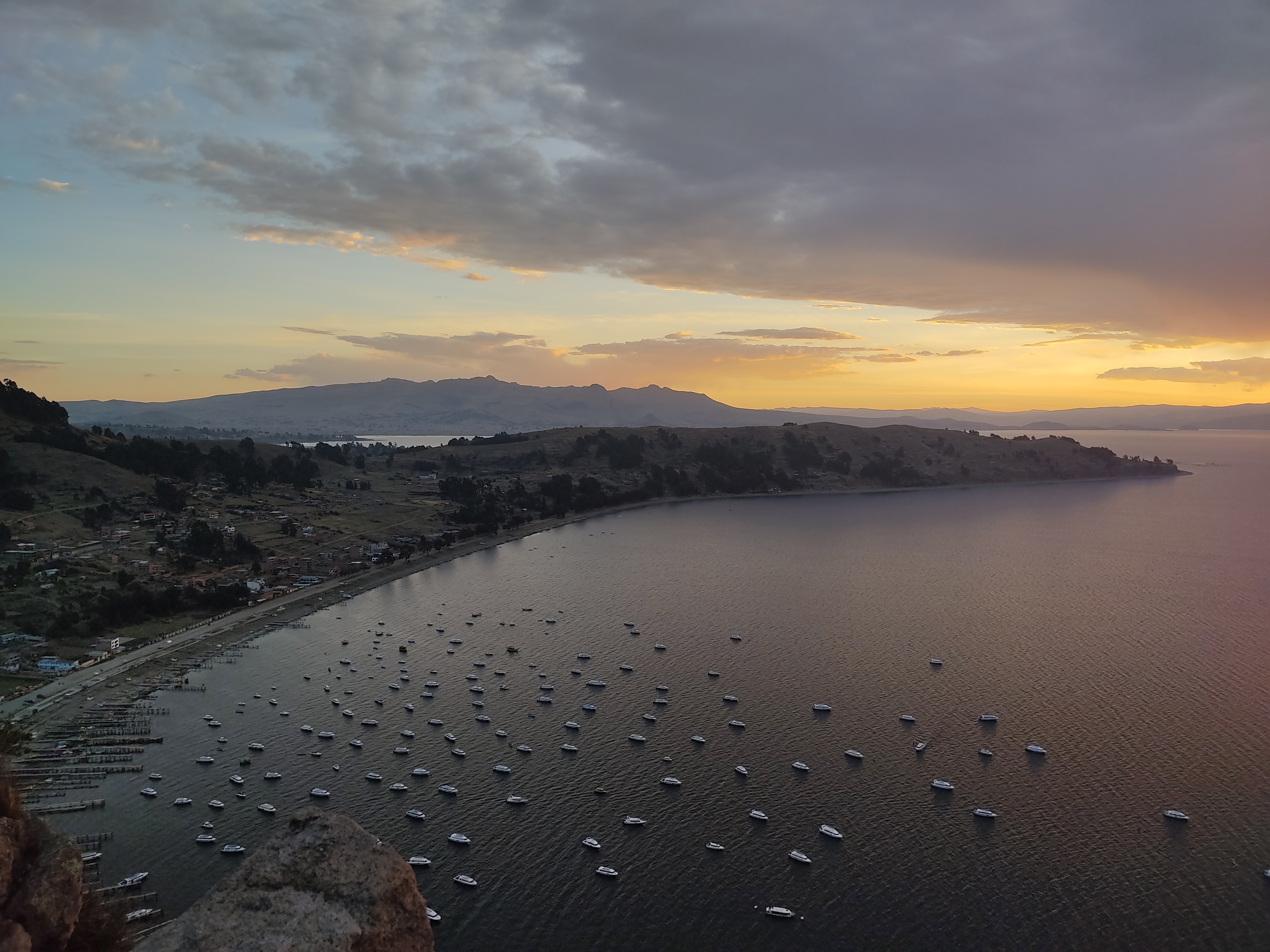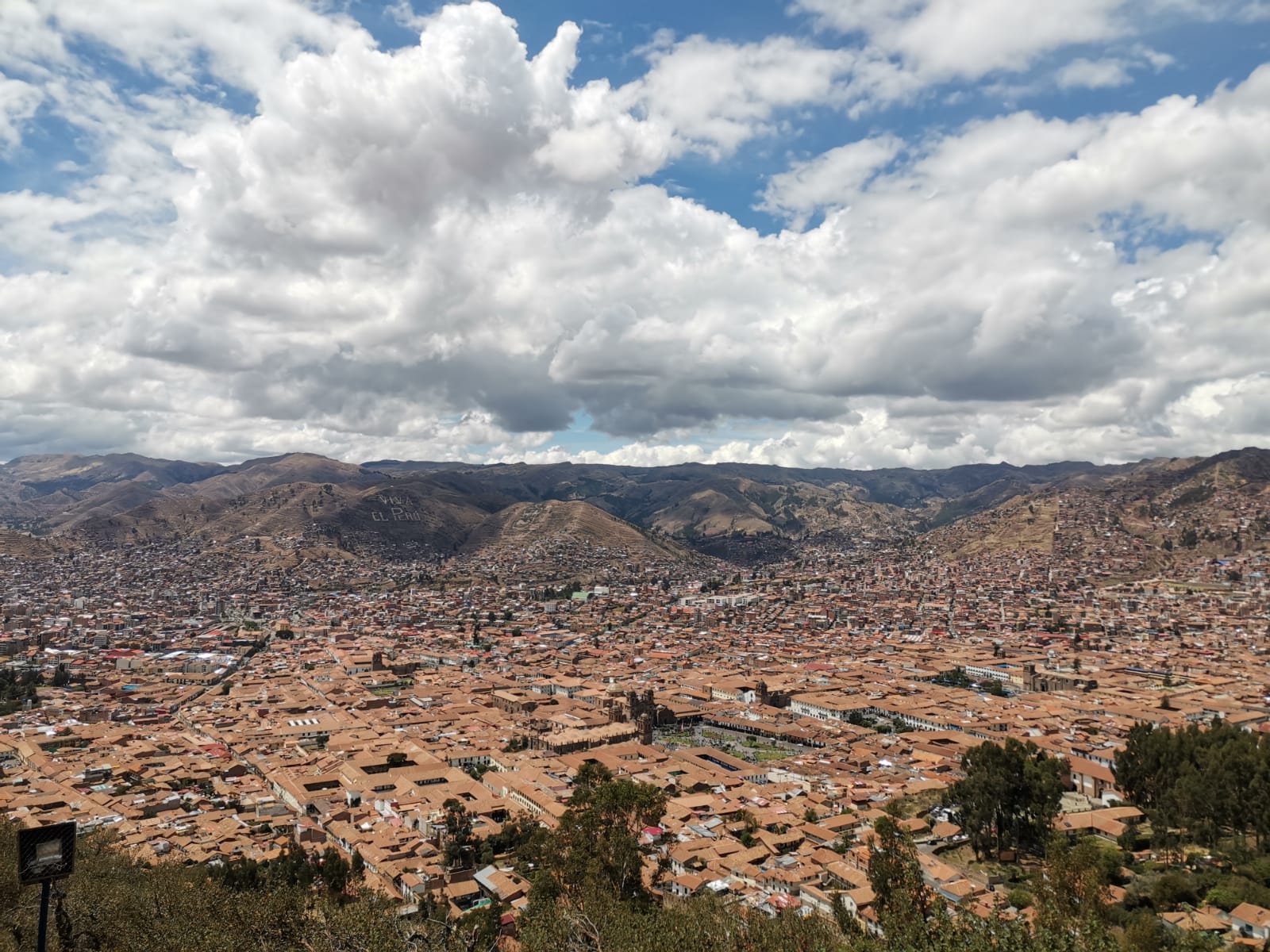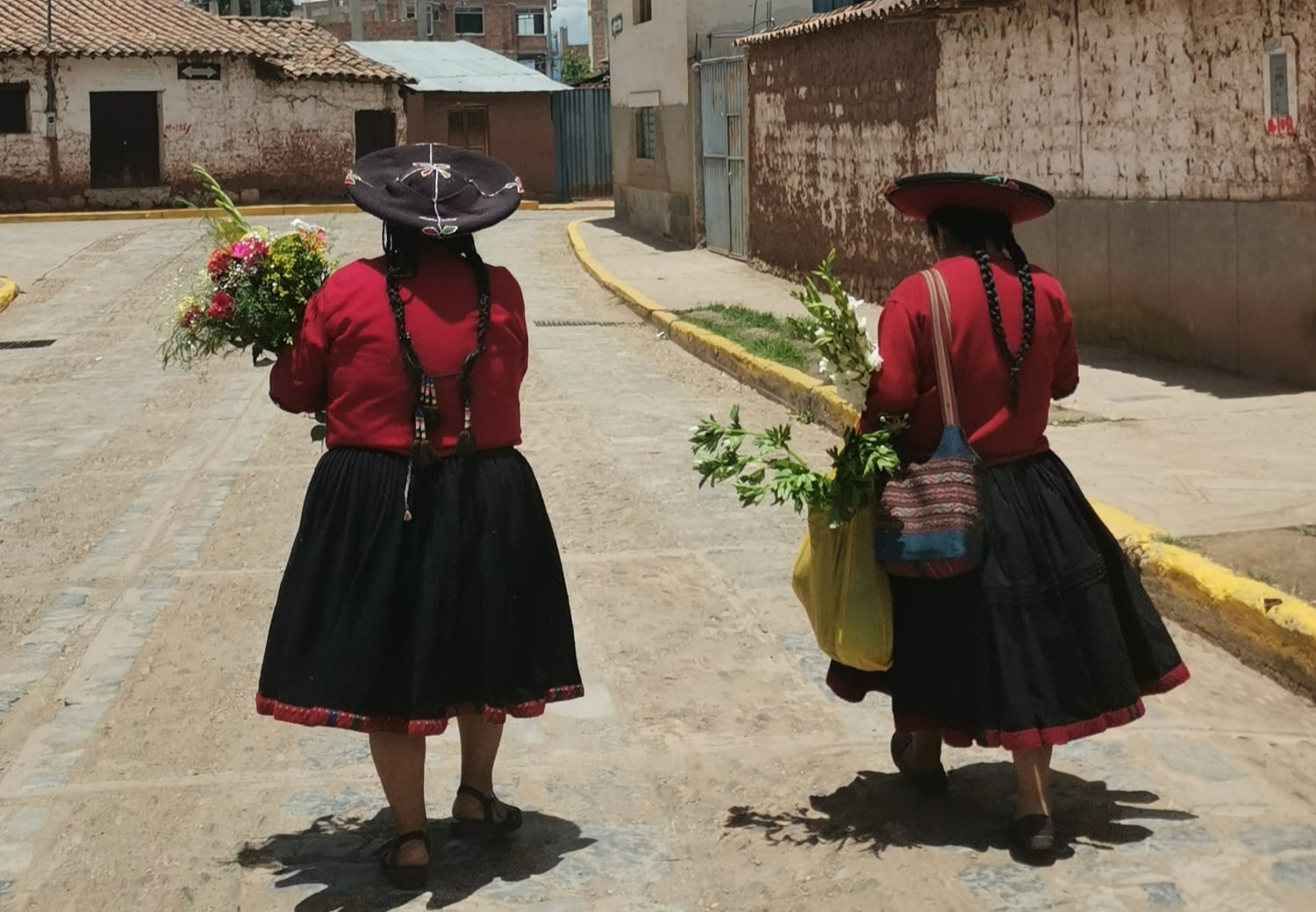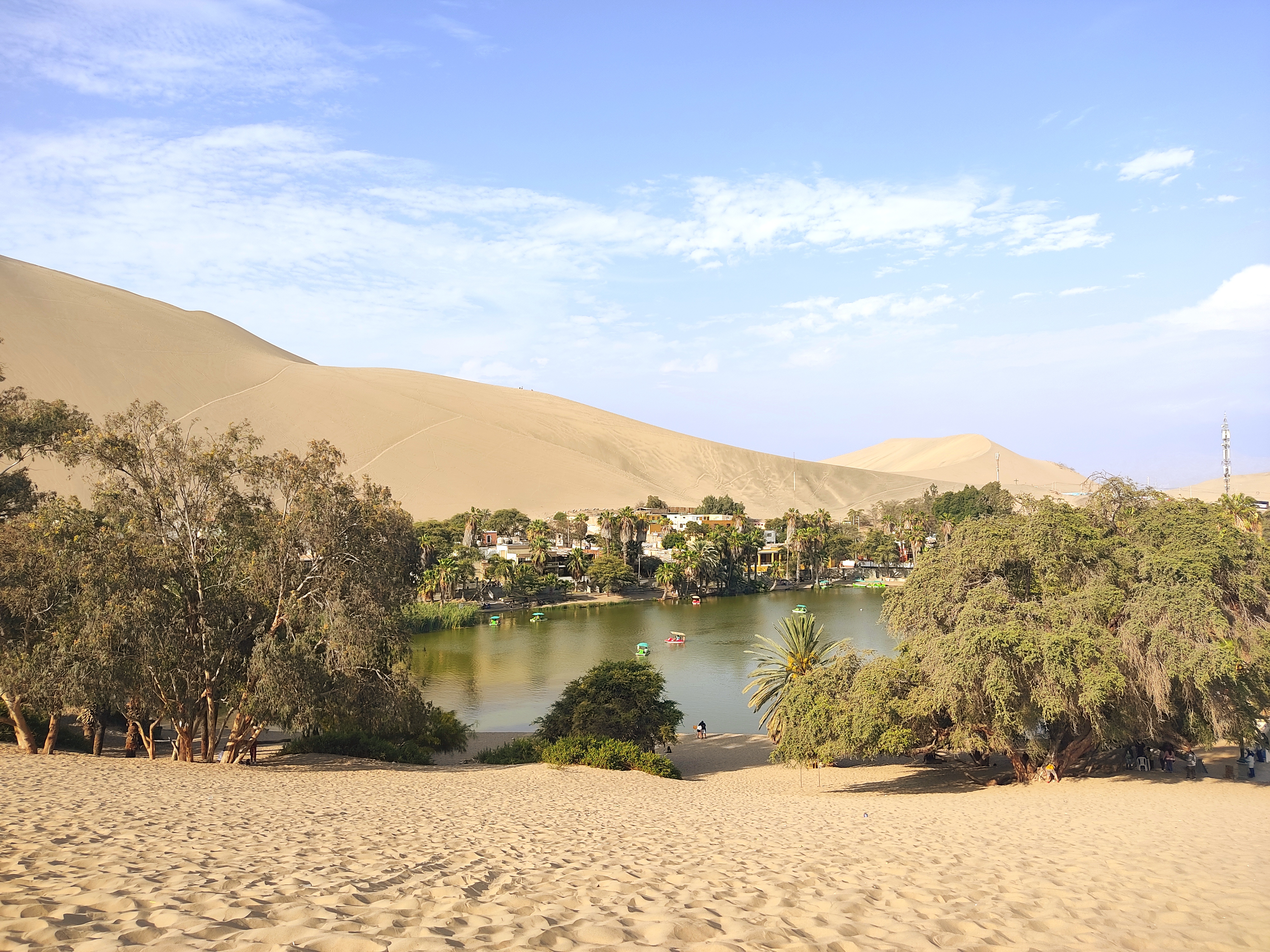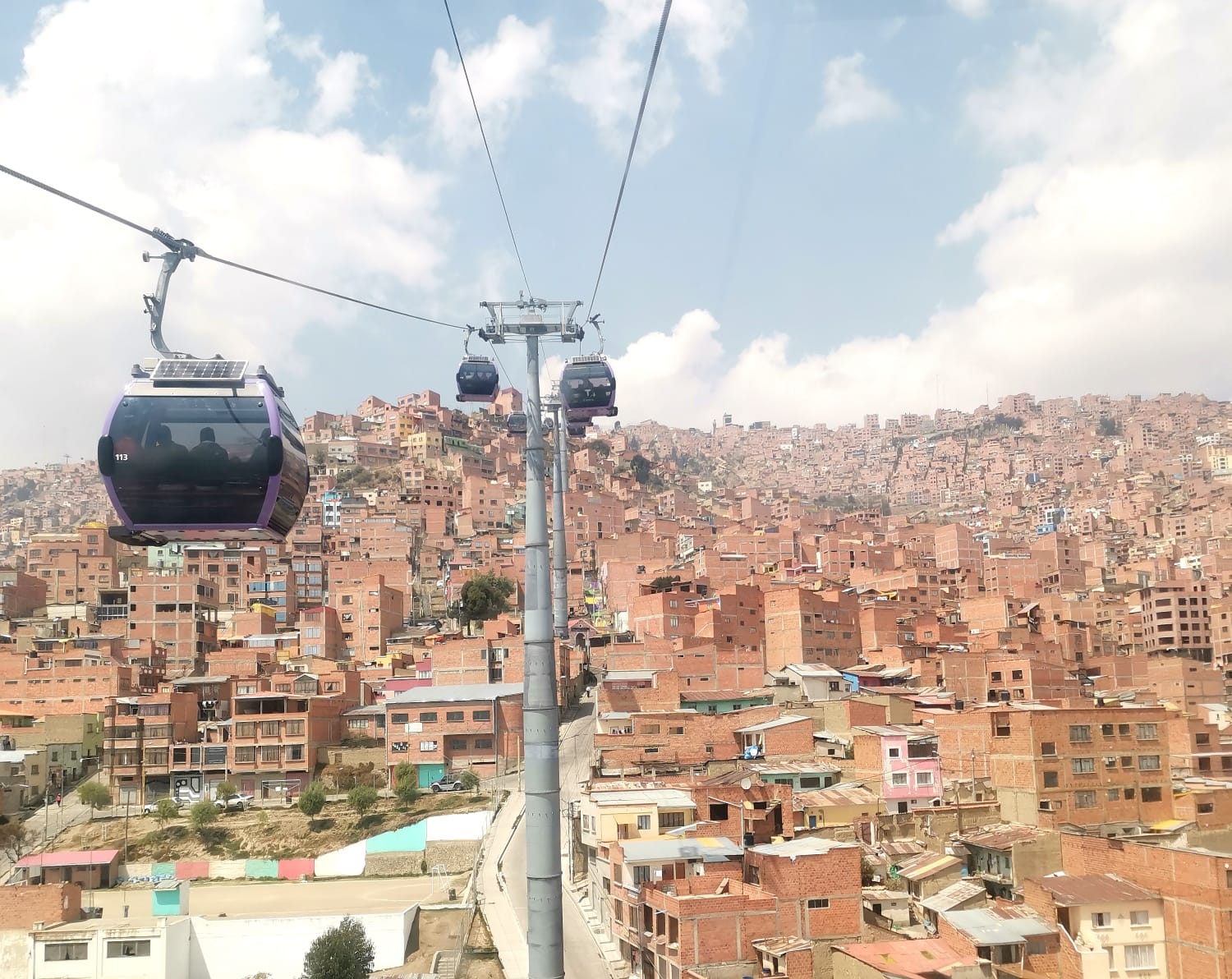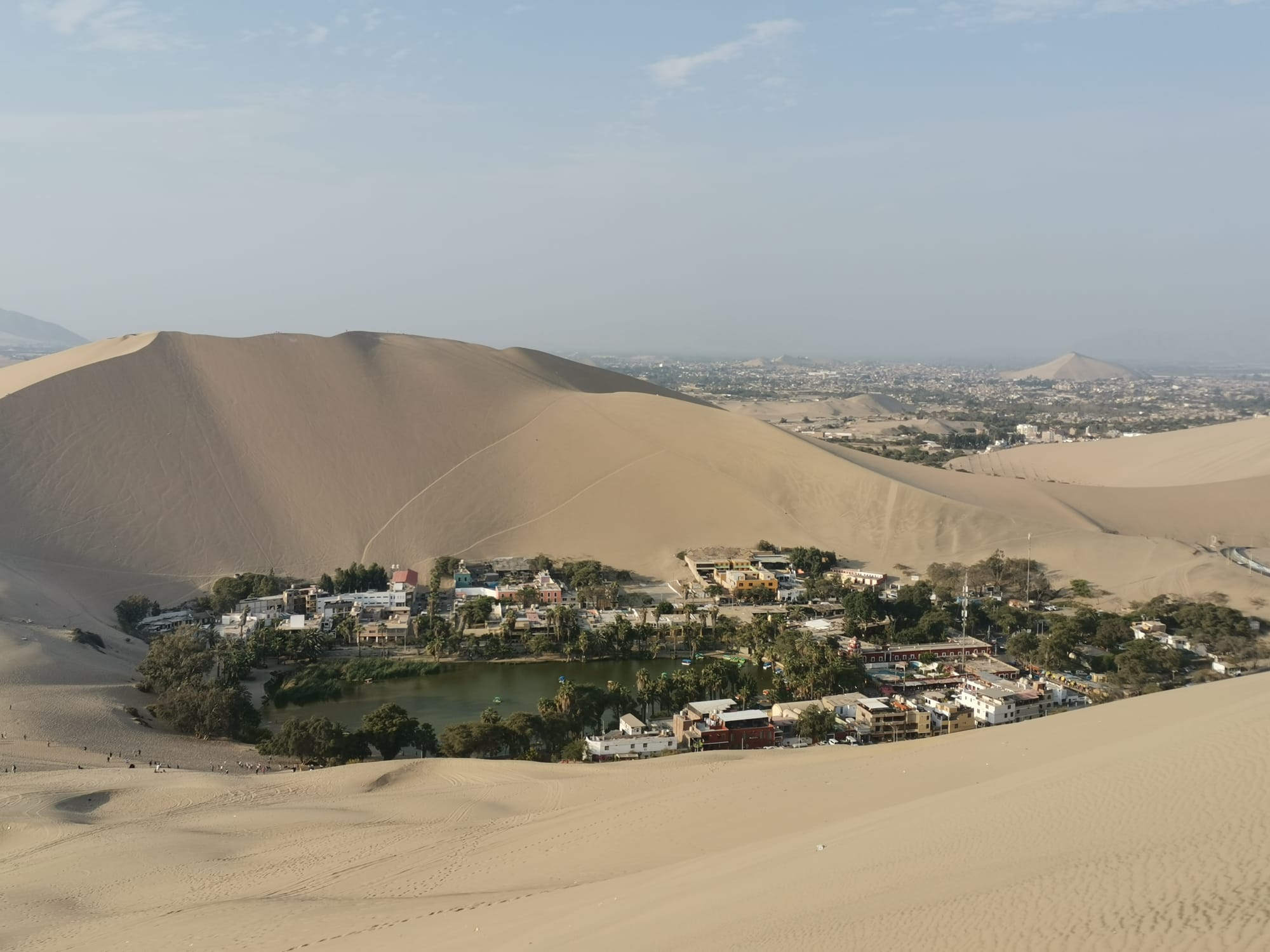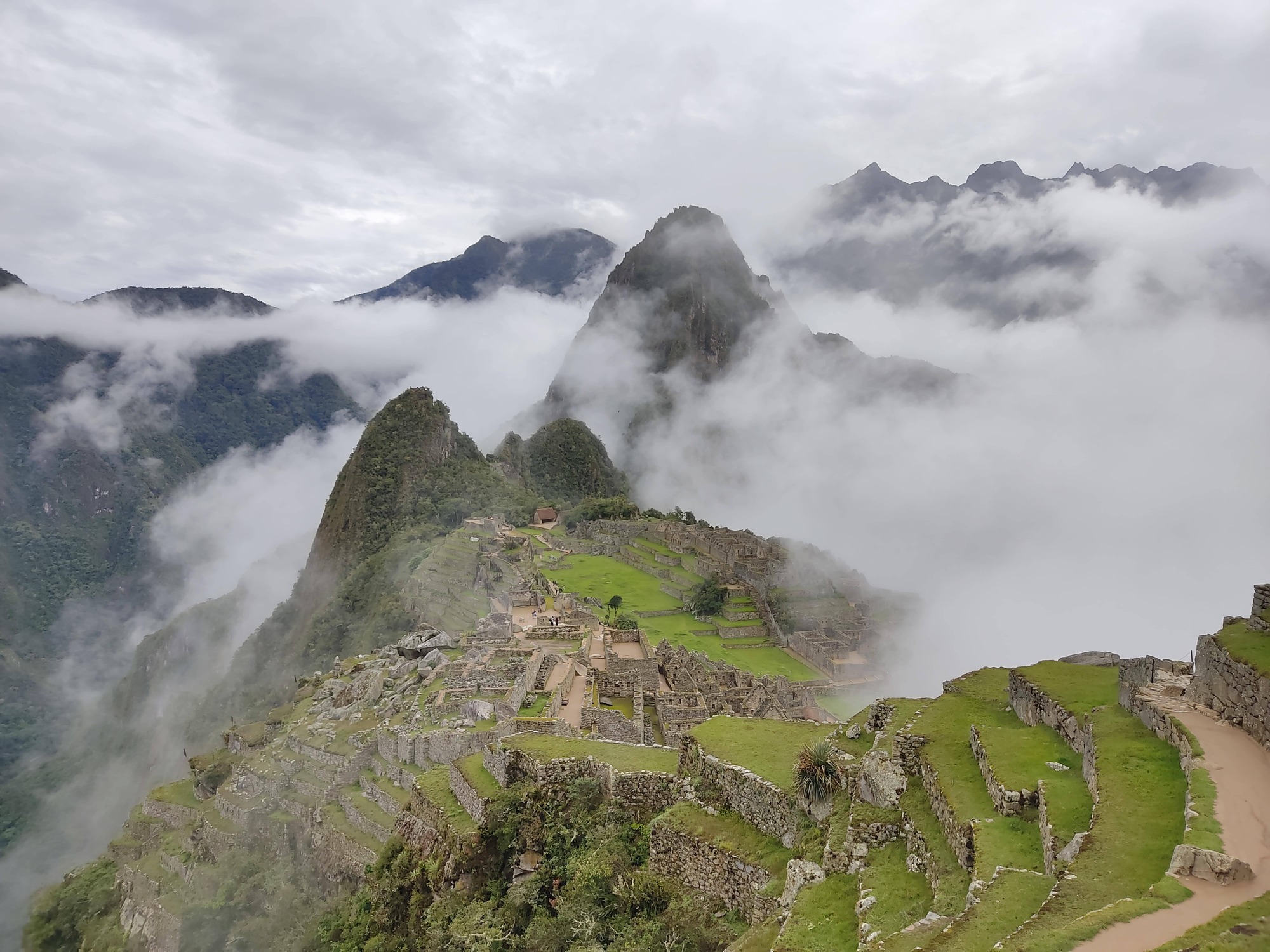Lake Titicaca - Introduction
Lake Titicaca, the highest navigable lake in the World, marks the border between Peru and Bolivia, and is a popular tourist attraction for both countries. The lake stretches for as far as the eye can see, feeling more like the Ocean than a lake - it is easy to forget you are at nearly 4,000m above sea level. Ownership is shared between the two countries, with the cities of Puno and Copacabana being the main tourist destinations on the Peruvian and Bolivian shores, respectively.
After the least officialIt is important to actively seek out the small huts which pose as the immigration offices and get an entry stamp; you could easily stroll across the border without anyone batting an eyelid. If you don't hunt down an entry stamp though, you might run into serious problems when trying to leave the country at another border. border crossing we have ever seen, and a 200m walk through no-man's land between our two buses, we navigated our first South-American border crossing with easeFor British passport holders, no VISA or any other paperwork is required to enter Bolivia. We read that we would have to show proof of yellow fever vaccination, but at this particular border the immigration officers could not care less.. You could be forgiven for thinking we were still in Peru, because, superficially, not much had changed. However, the two towns on the shores of the lake actually couldn't be more different.
Peruvian Titicaca
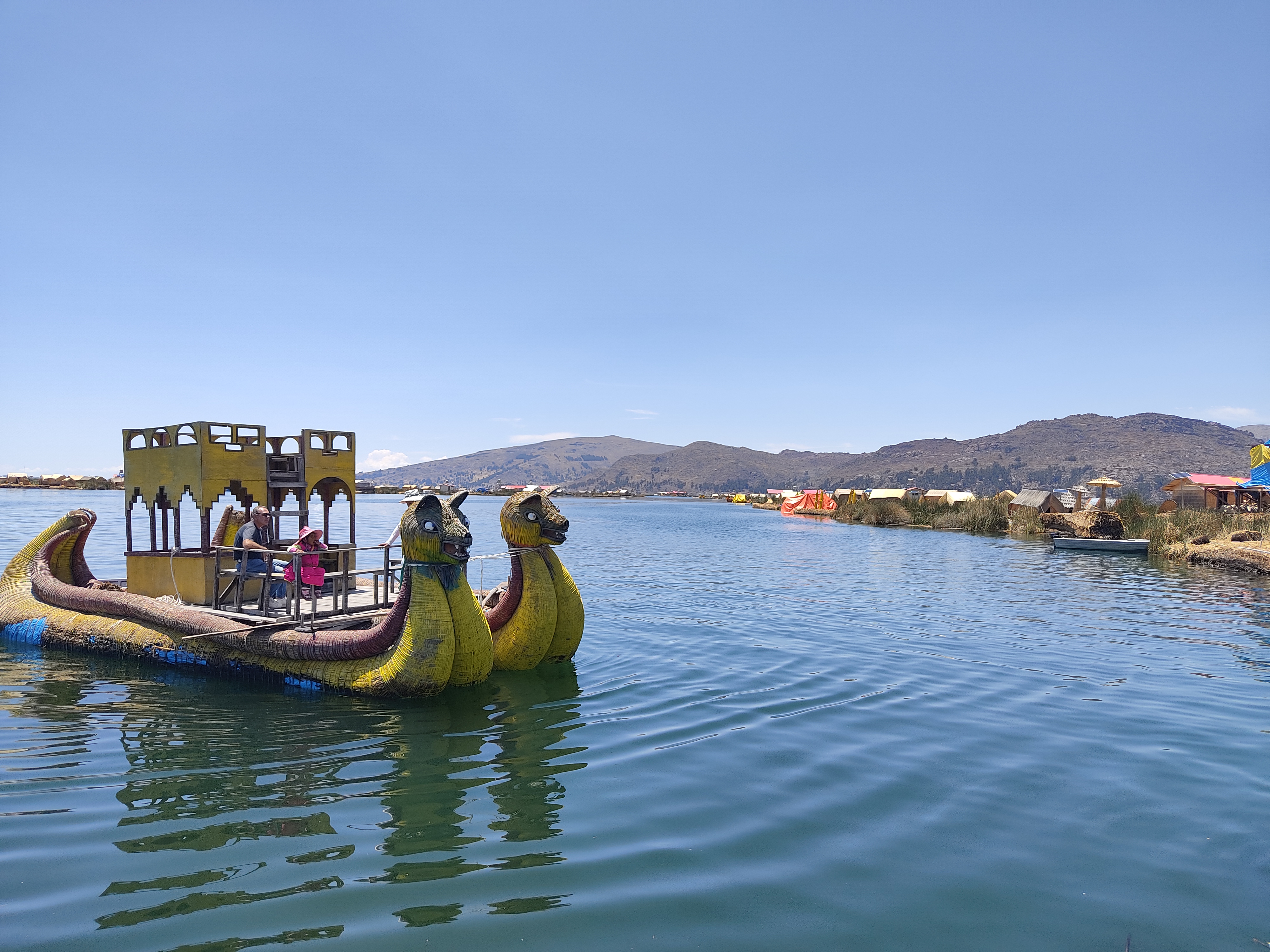
Puno
The city of Puno was our last destination in Peru, although there is actually little of interest for most tourists in the city itself (apart from a few good pizzaPuno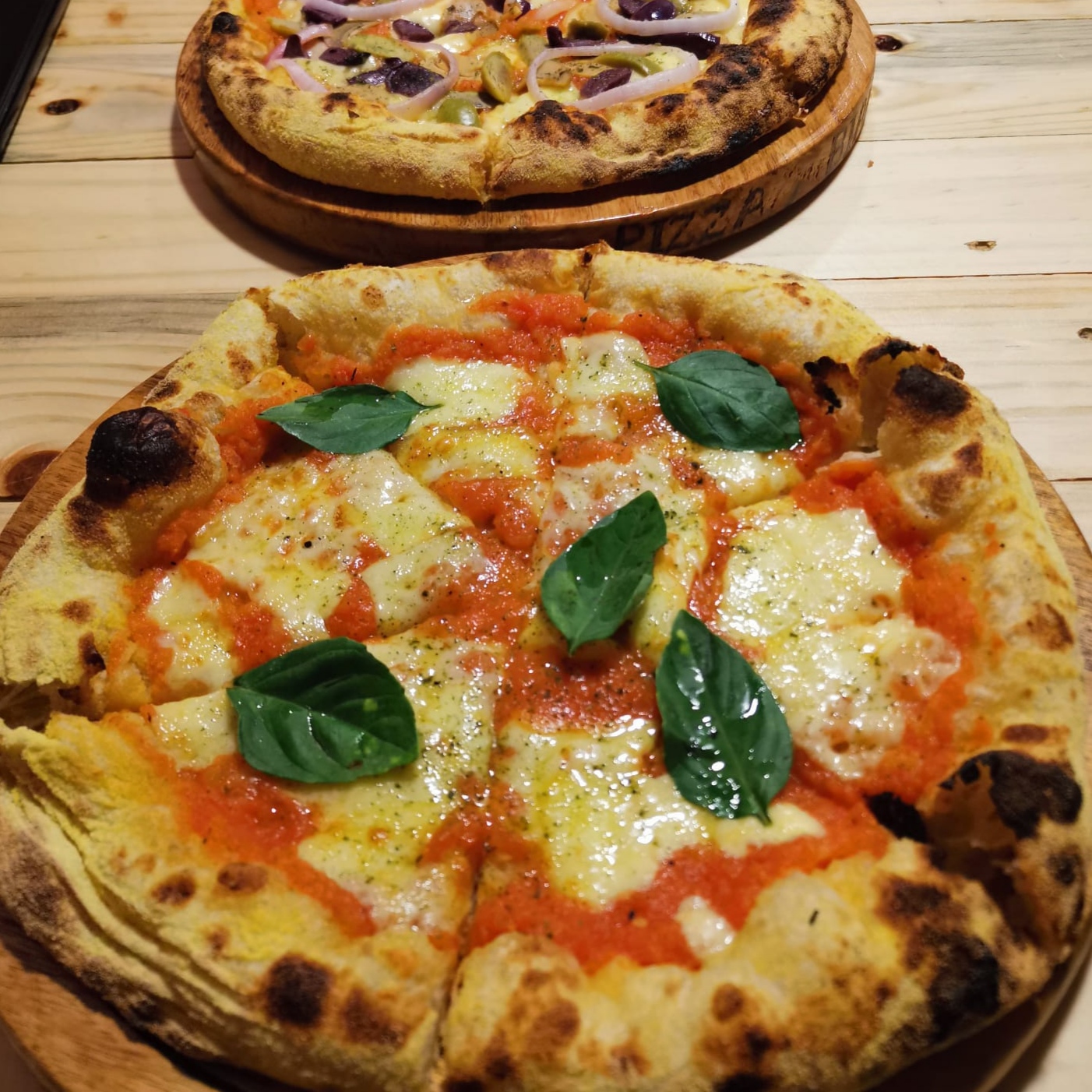 The only photo we took in Puno was of these delicious pizzas from one of the many Pizzerias in town. We were very impressed with the quality of the pizzas here, since Peru is so far from Italy. places). Puno is used as a base to explore the diverse islands of the lake. We had been to some pretty remote places in Peru, but the islands which were a few hours by boat in the vast expanse of lake Titicaca were arguably the most isolated. The inhabitants of these islands still maintain some of their oldest traditions, which haven't been influenced by the colonialisation and modernisation of the rest of the country. In total, we visited 3 islands (Uros, Amantani, and Taquile), on a combined tour which included an overnight island homestay, and each island had its own character.
The only photo we took in Puno was of these delicious pizzas from one of the many Pizzerias in town. We were very impressed with the quality of the pizzas here, since Peru is so far from Italy. places). Puno is used as a base to explore the diverse islands of the lake. We had been to some pretty remote places in Peru, but the islands which were a few hours by boat in the vast expanse of lake Titicaca were arguably the most isolated. The inhabitants of these islands still maintain some of their oldest traditions, which haven't been influenced by the colonialisation and modernisation of the rest of the country. In total, we visited 3 islands (Uros, Amantani, and Taquile), on a combined tour which included an overnight island homestay, and each island had its own character.
Uros Islands
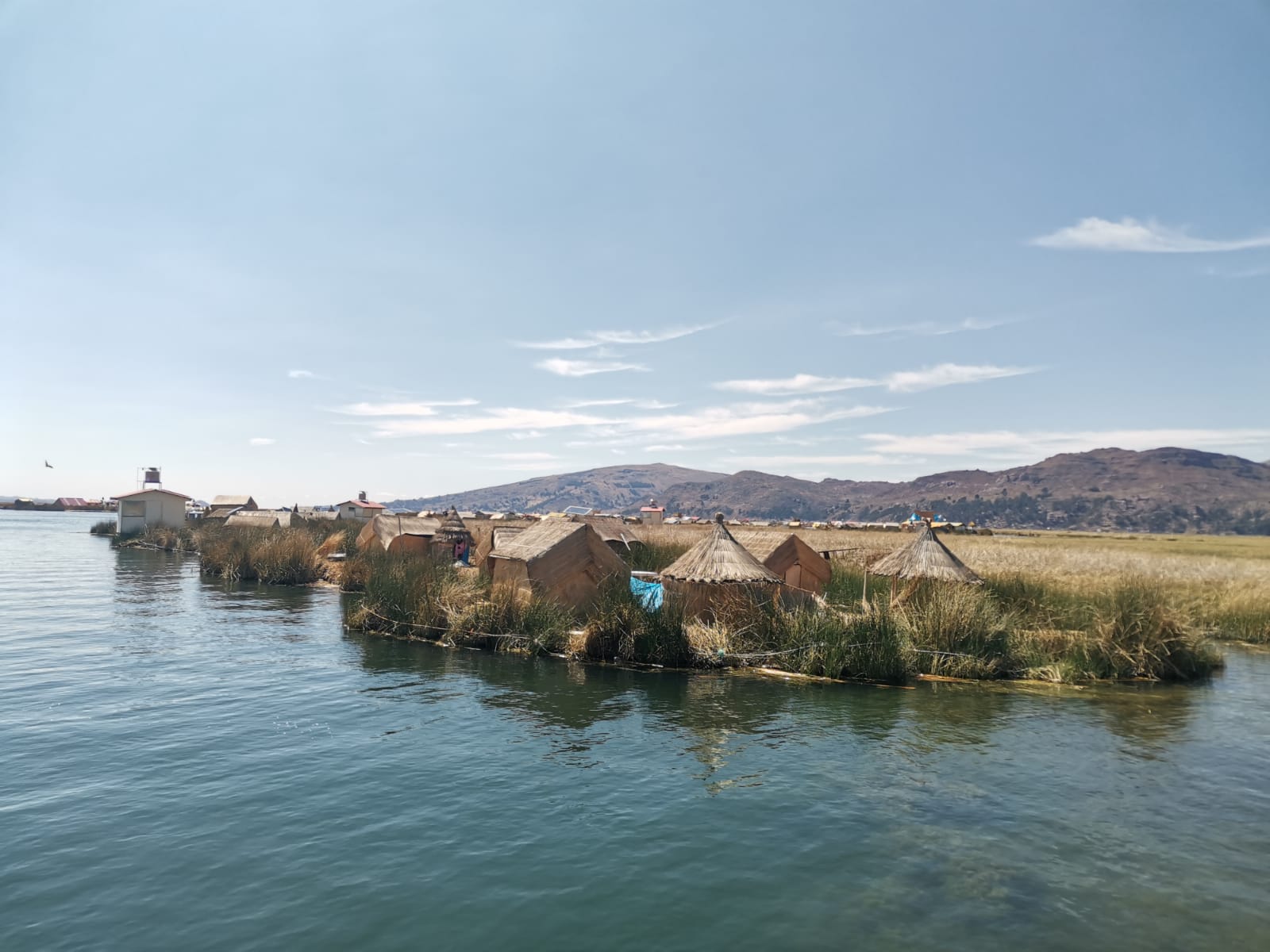
The closest and most popular islands to visit from Puno are the floating Uros islands, a 30 minute boat-ride from the dock. These have been inhabited by the Uros people for centuries, who fled to the water on reed boats to keep moving and escape the expanding Inca empire. After deciding that the protection provided by the lake was invaluable, they constructed small islands out of tortora reeds and made them their permanent residences. Today, there are still over 300 floating islands, with Uros people still living in these unusual settlements. Although some modern day influences have reached their shores, like solar panels, the islands are still constructed entriely from reeds and maintained in the traditional way, and if built well they can last for decades.
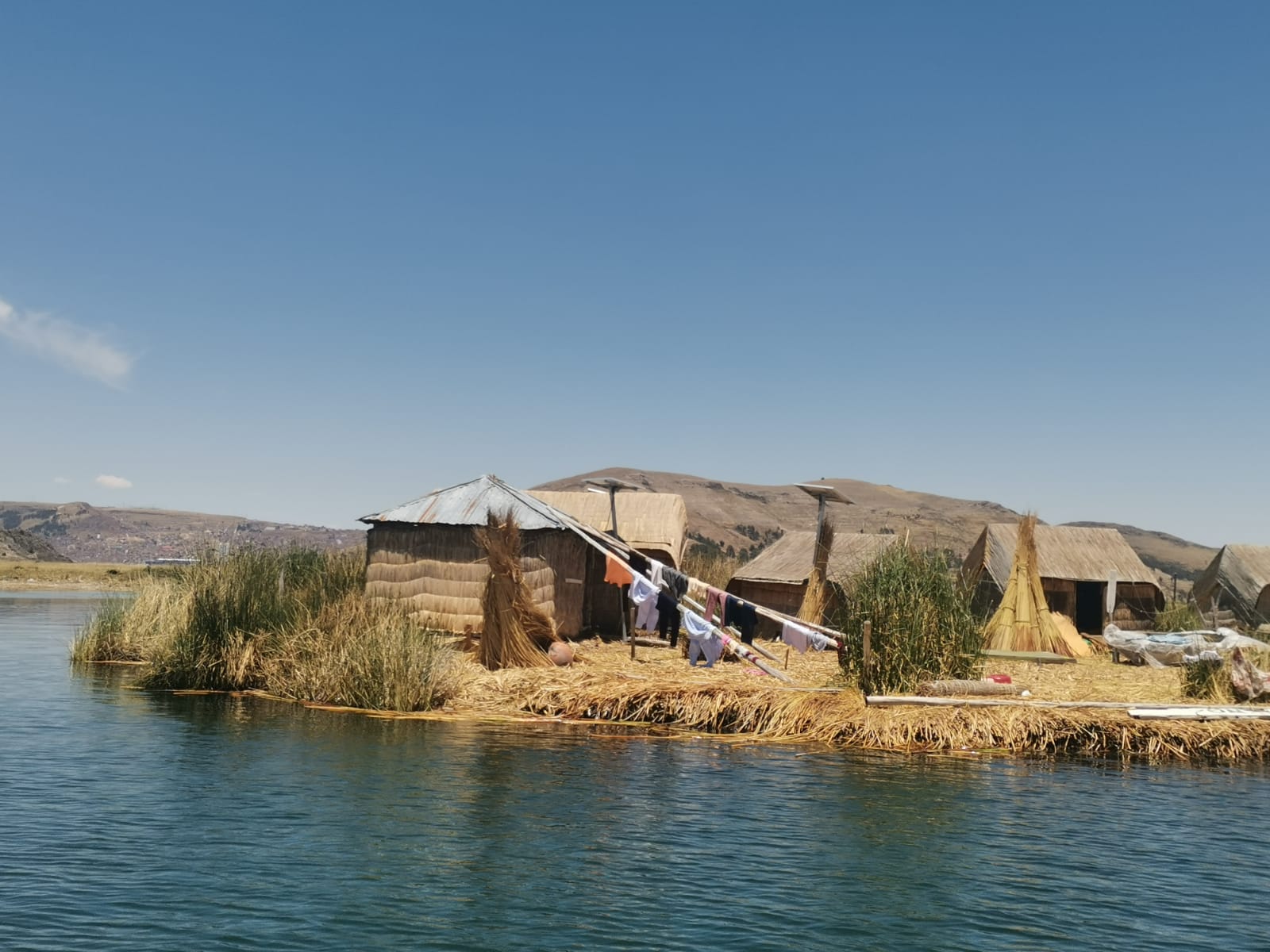

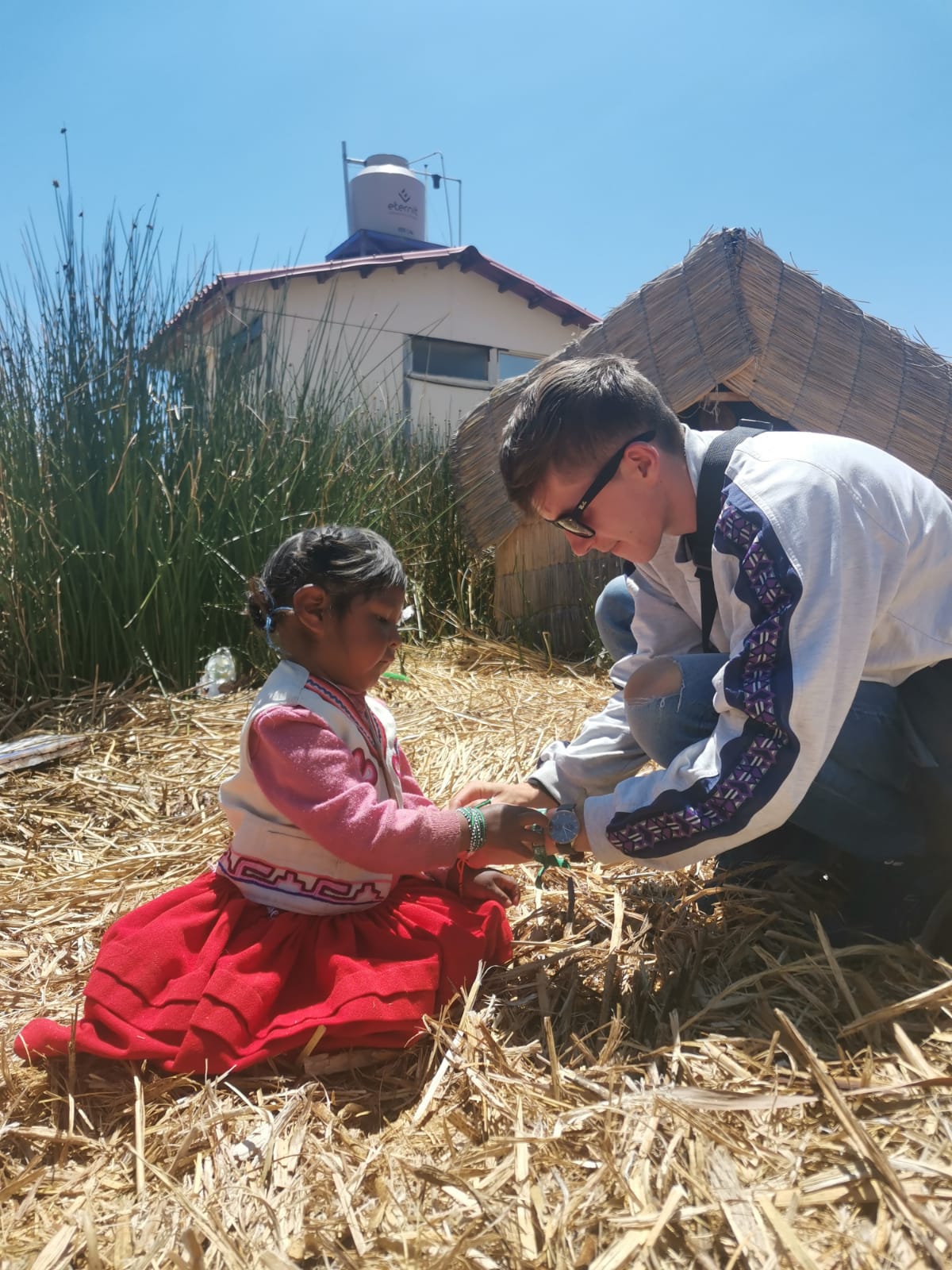
The islands seemed like an impossible creation from a fantasy world, gently bobbing on the lake's surface. Each floating island only houses one family so they are quite small. Since the threat of the Incan empire is no longer a concern, the people live on these islands now not out of necessity, but as a way to preserve their culture and secure income in the form of tourism. Unfortunately, this somewhat detracts from the charm of the islands as the interactions with the locals feel very forced. The only source of incomeBesides fishing and the few handicrafts they produce, the Uros people don't have access to anything to barter or trade at the mainland. The continuation of this culture really is solely dependent on tourism. for the locals living here is tourism, and the atmosphere can get awkwardSince the islands are so small, there is not much to do while you wait for the tour to move on, with the locals trying to convince you to buy all kinds of souvenirs.. Many people will emphasise the over-touristy nature of these islands, saying it is not worth the trip, even suggesting it is unethical to visit. It's impossible to know how much of the price you pay for the tour actually goes to the Uros communities, so leaving a little cash or buying a souvenir is a nice way to thank them for inviting you into their homes.
Overall, although highly interesting, we probably wouldn’t recommend coming all this wayA lot of tours just visit the floating Uros Islands. We met lots of people who left Puno just 2 hours after arriving - the majority of that time was spent on the ferry to/from the floating Uros islands. just to see the floating Uros islands. Lake Titicaca has so much more to offer! Fortunately, we had two more islands to see, a further 2 hours away by boat.
Spending a night on Amantani Island
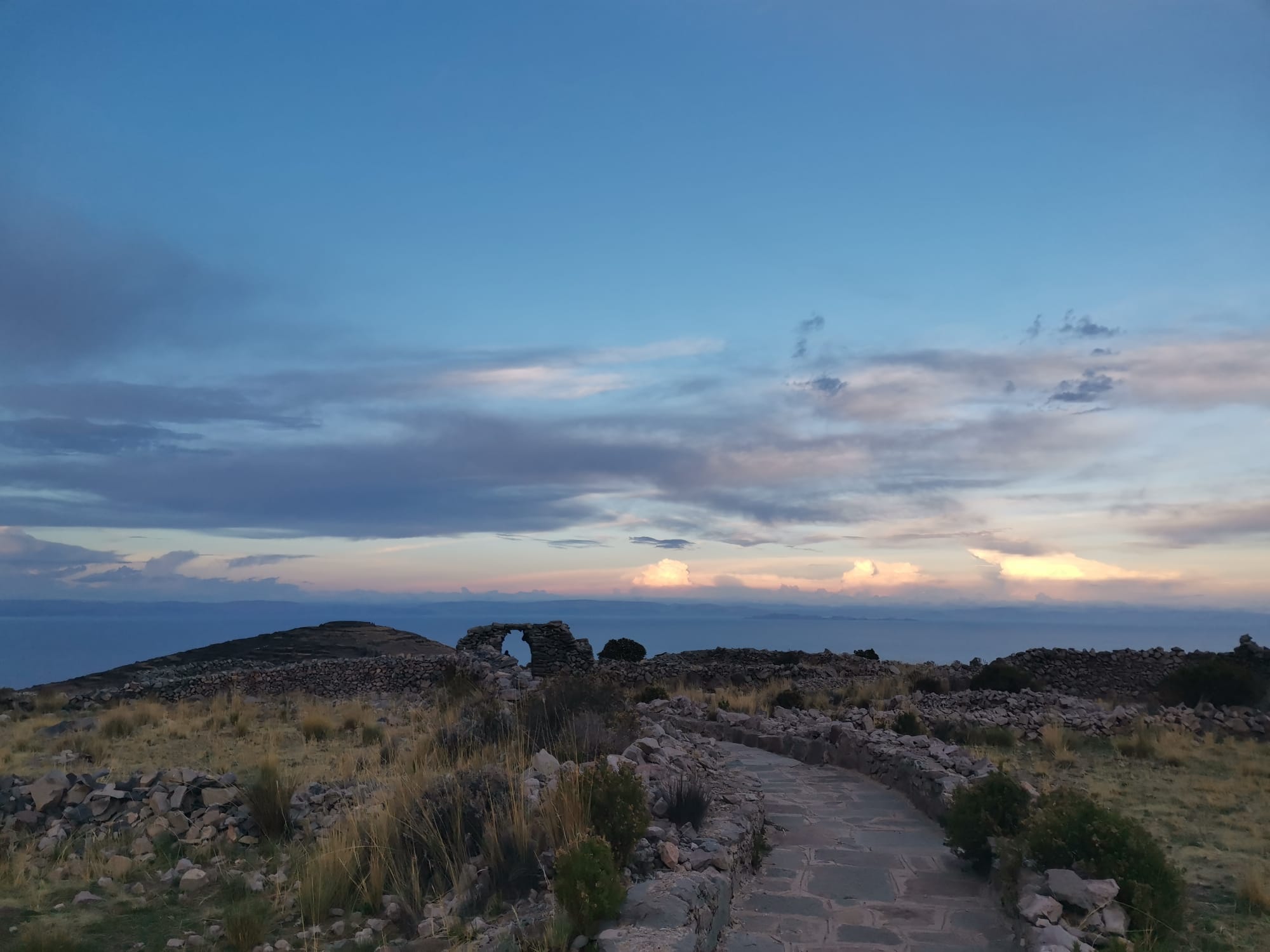
After the Uros islands, our tour boat continued on towards Amantani island. Despite the Altitude, the sun was strong, so we spent most of the ride sunbathing on the roof of the boat. Amantani is a tranquil island, with only a few small communities living and growing crops on the hillsides that overlook the vast blue lake.
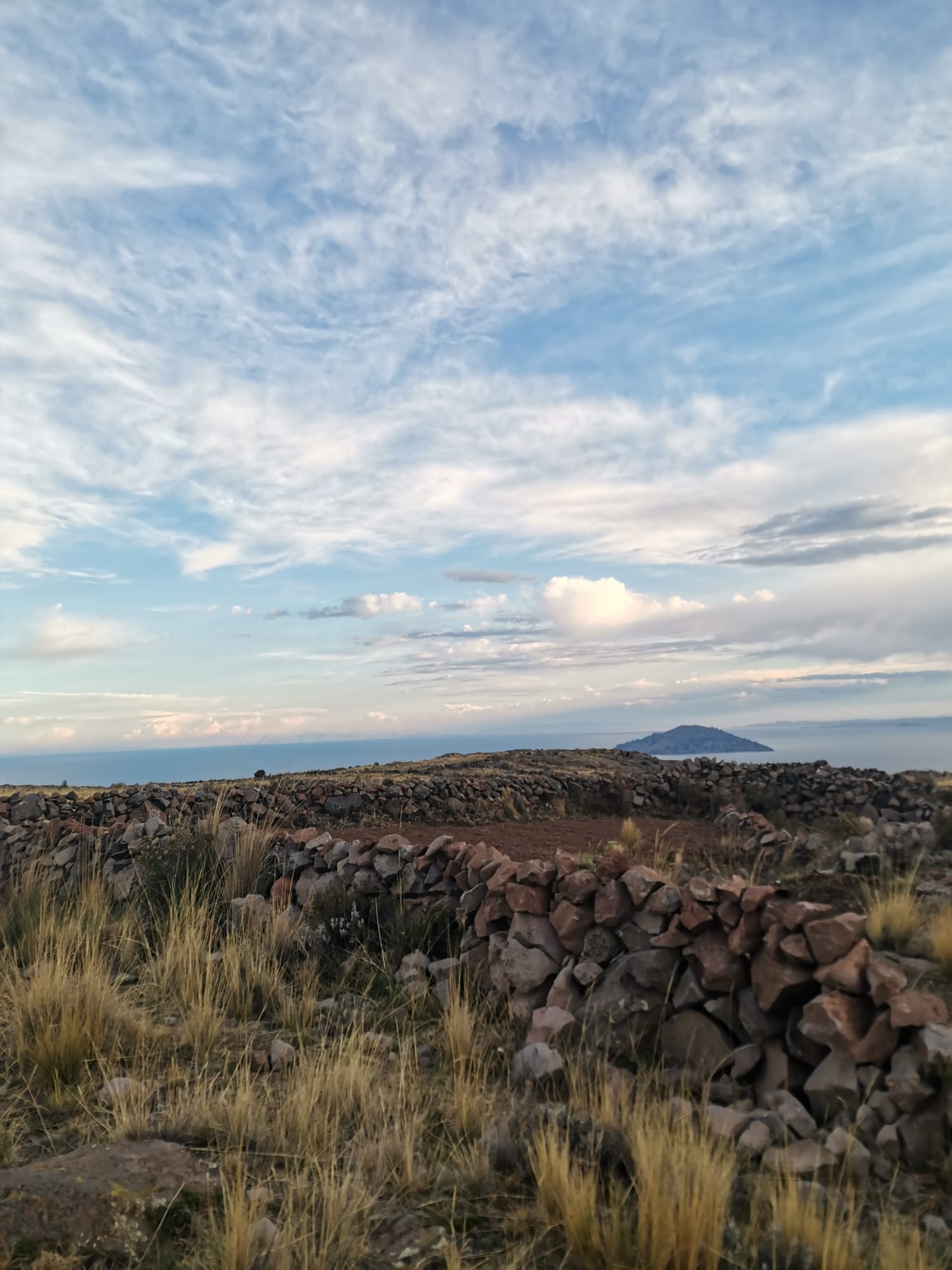
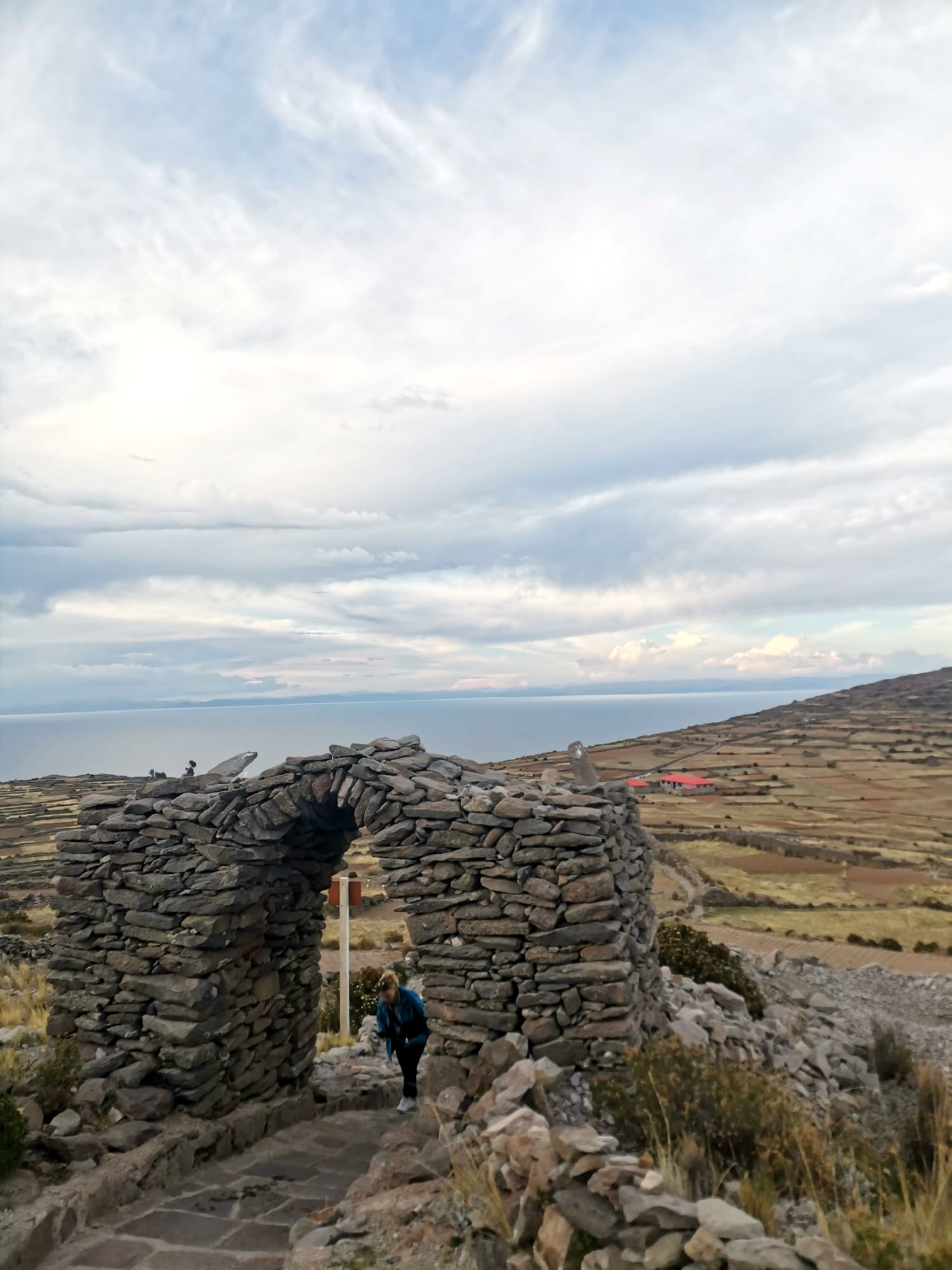
Although we generally try to avoid tours, this one was very well organised, and offered the chance to spend a night in a homestay on the island. This was a rare opportunity to learn more about the culture and traditions of the people living on the lake. Despite arriving to Amantani as a big group of tourists, we were quickly split up into groups of 3 or 4, and assigned a separate host family. We got to spend a lot of time chatting with our host family, using the little SpanishWe had read online that the people of Amantani speak only Quechua, however everyone in the village also spoke Spanish. They spoke very slowly and clearly - ideal for beginners like us to understand and pick up some new vocabulary we had picked up so far. Our host family really seemed to enjoy hosting guests, right down to the youngest grandson (1 year old James) who was having a lot of fun entertaining us with a drum performance. Nancy and her family treated us to a delicious vegetarian lunchHome cooked lunch  We were initially apprehensive about doing an overnight homestay, because we did not want to cause extra trouble to our hosts for being vegetarian. Fortunately, it turned out that the people of Amantani island mainly eat vegetarian food anyway, which is why we chose to spend the night here rather than on Taquile island. All the food prepared for everyone on the tour was vegetarian. typical of the island - quinoa soup and root vegetables. Not much else is grown on the island, and importing produce from the mainland is too expensive.
We were initially apprehensive about doing an overnight homestay, because we did not want to cause extra trouble to our hosts for being vegetarian. Fortunately, it turned out that the people of Amantani island mainly eat vegetarian food anyway, which is why we chose to spend the night here rather than on Taquile island. All the food prepared for everyone on the tour was vegetarian. typical of the island - quinoa soup and root vegetables. Not much else is grown on the island, and importing produce from the mainland is too expensive.
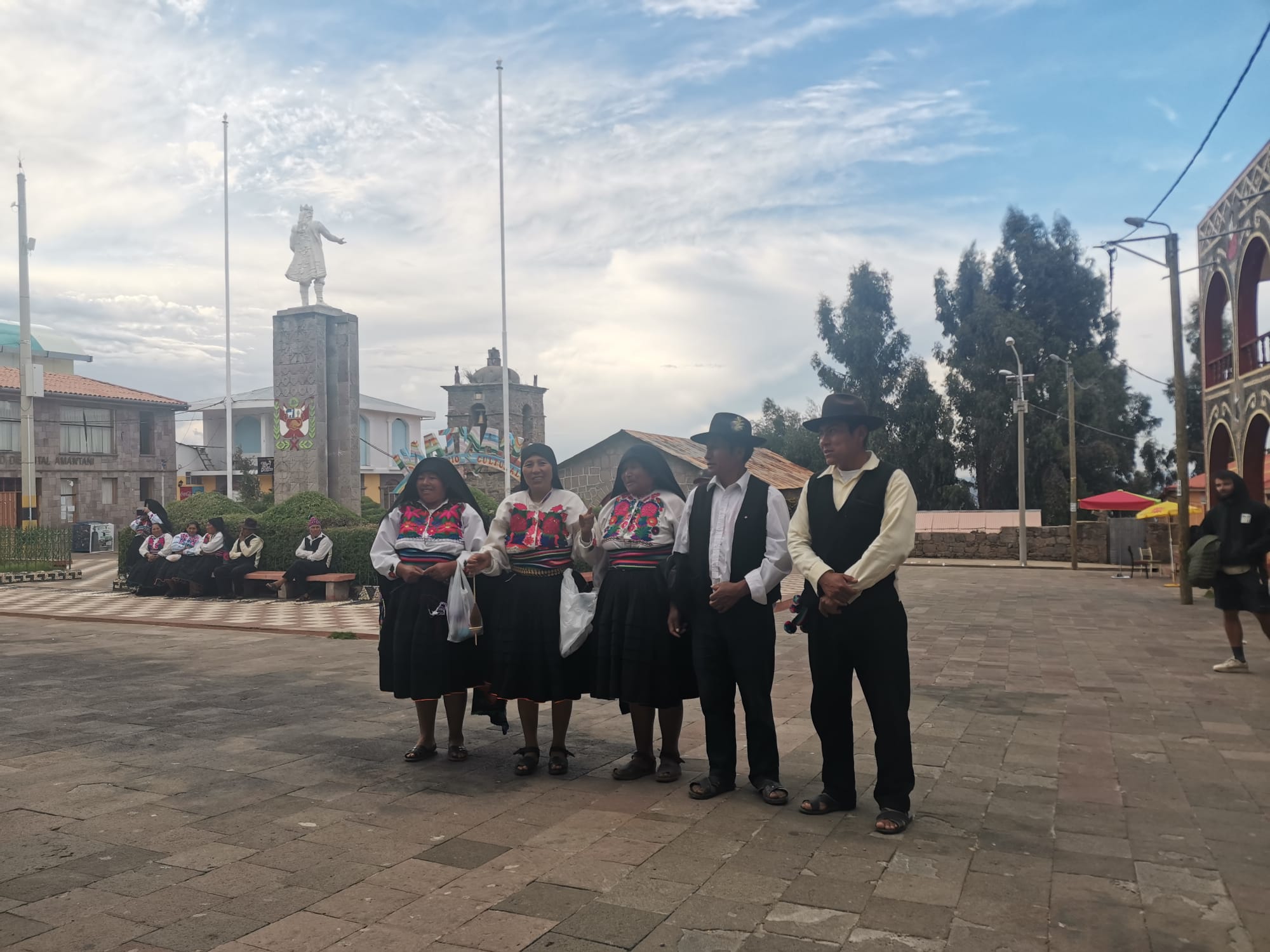
Almost everyone living on Amantani is a subsistence farmer, and the island felt truly isolated, surrounded by endless tranquil water. Only the occasional bleating from a nearby sheep broke the silence. We learned about how they are coping after the pandemic. Our hosts explained that each family takes it in turns to accommodate tourists, but with the huge post-pandemic decline in tourist numbers, they only get 3 opportunities a year to do this. Since tourism is an important income for the islanders, and the late rainy season meant crops were not doing well, the families on the island were struggling.
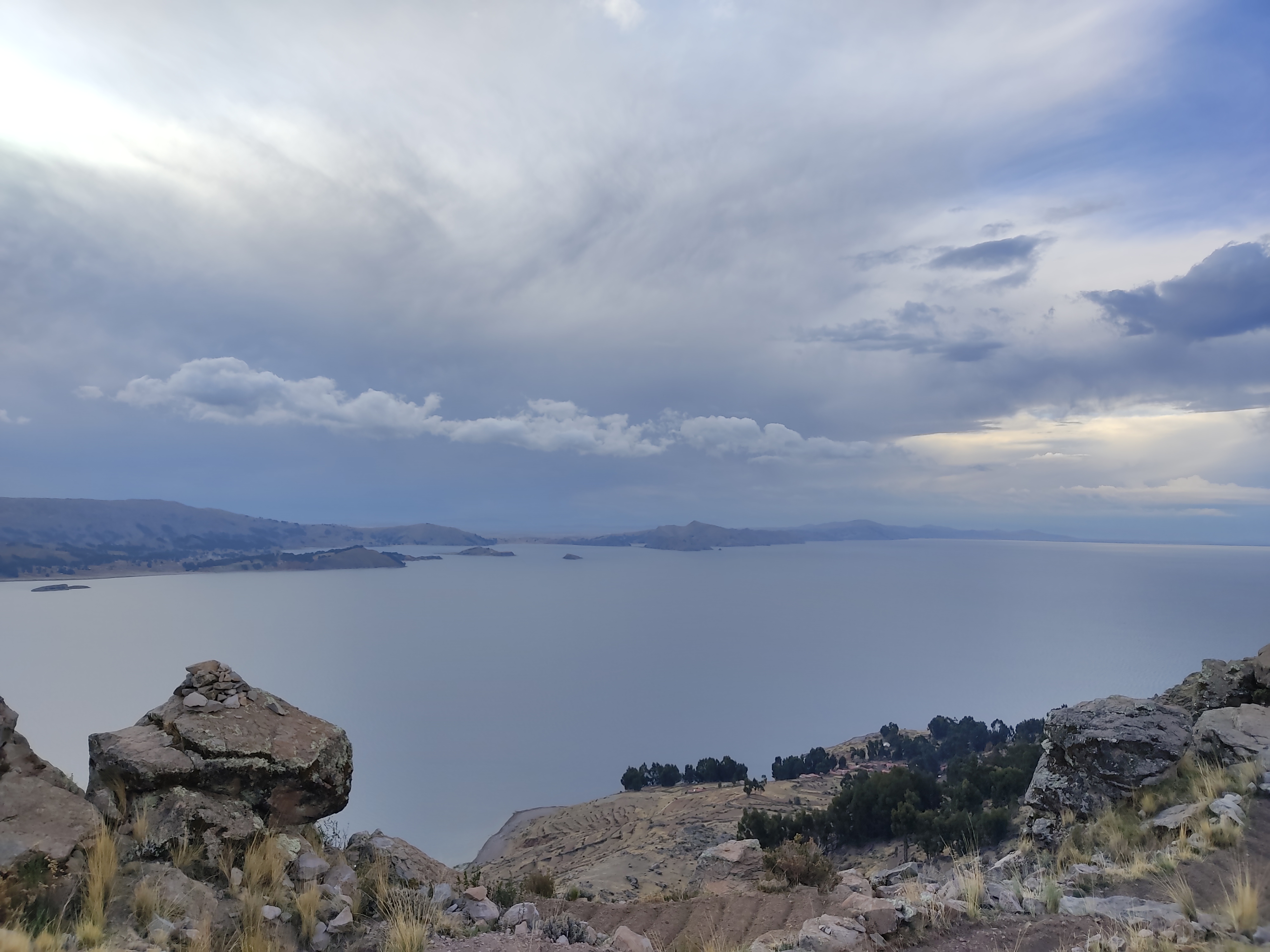
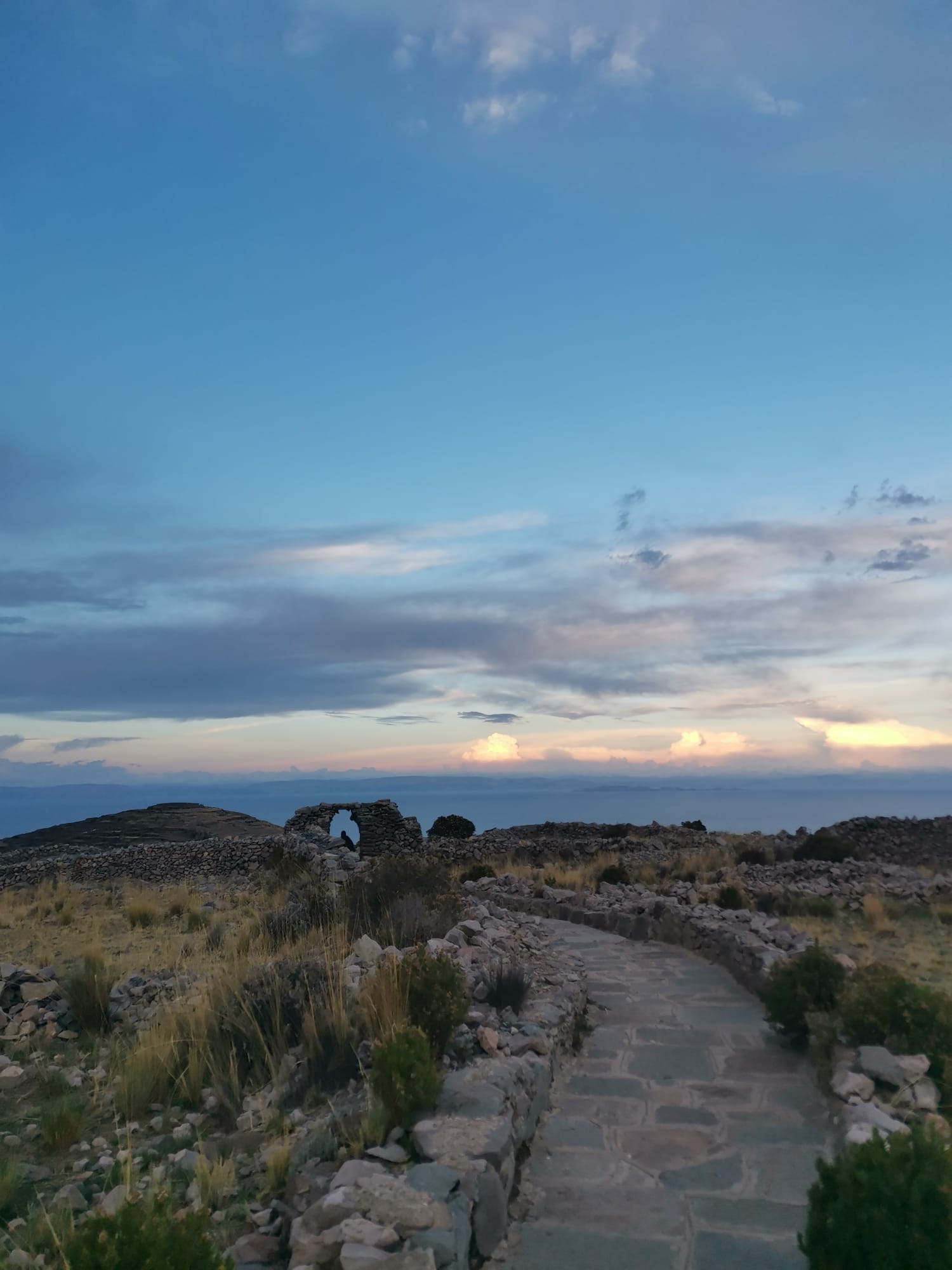
Amantani is home to Pachamama hill, the highest point of any lake island in the World, and a popular spot to watch the sun setting over the lake. After some time exploring the landscapes, we met back up with the locals for a cultural dance and music session in the village hall. We were all dressed in traditional Peruvian clothes by our hosts, as tourists and locals alike danced in a big circle, as the band played traditional hits.
Taquile Island
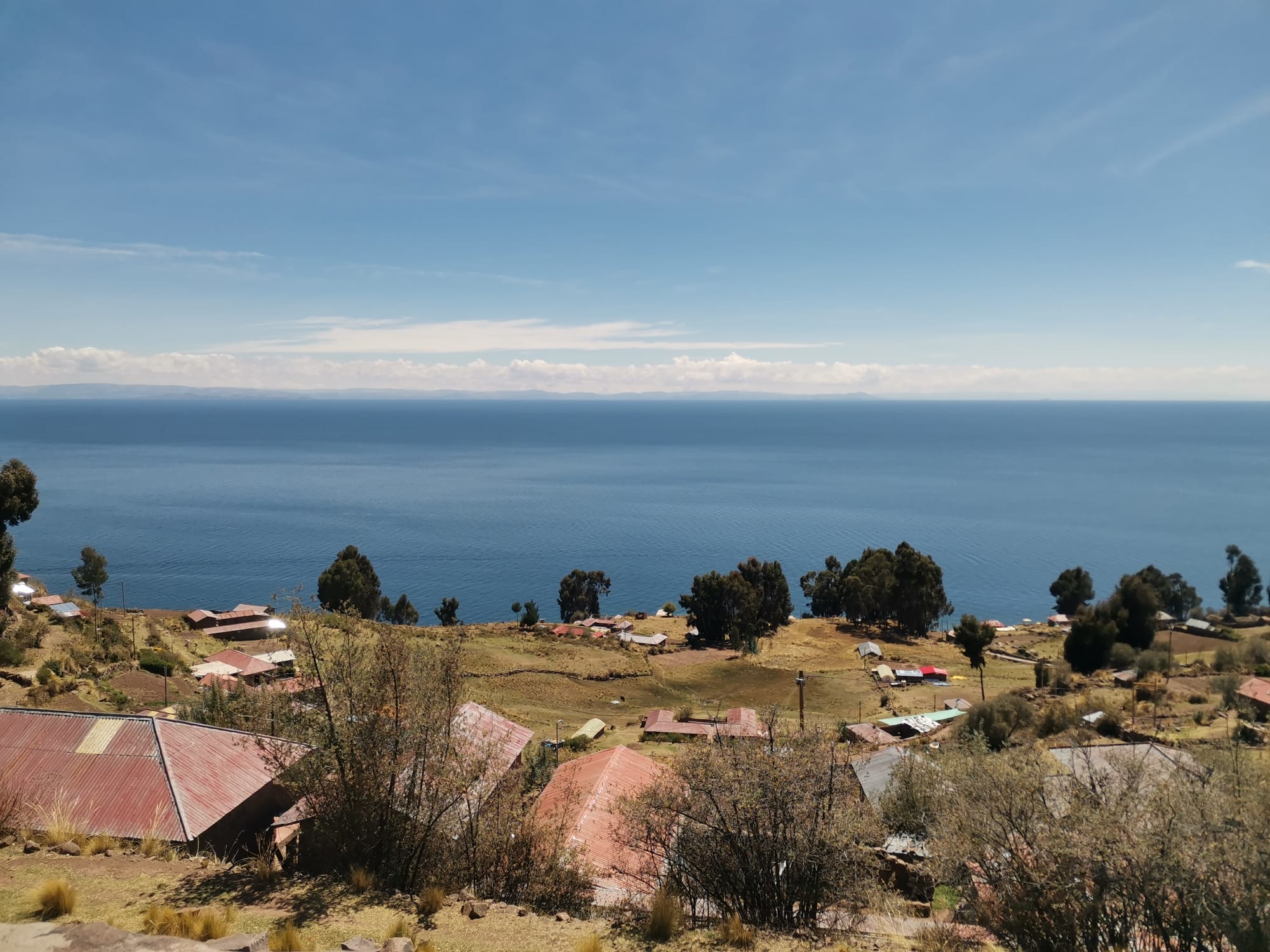
After an early breakfast on Amantani, we said adiós to our hosts and hopped back on the boat. Geographically very similar to Amantani, but culturally unique, Taquile island is truly captivating. Here, the locals speak a sort of hybrid language composed from Quechua and Spanish. There are also no permanent positions of power in the societies on Taquile - the locals take it in turns to act as police officers and governors, with both husband and wife working together, so if one gets elected into power they both have to take on the role.
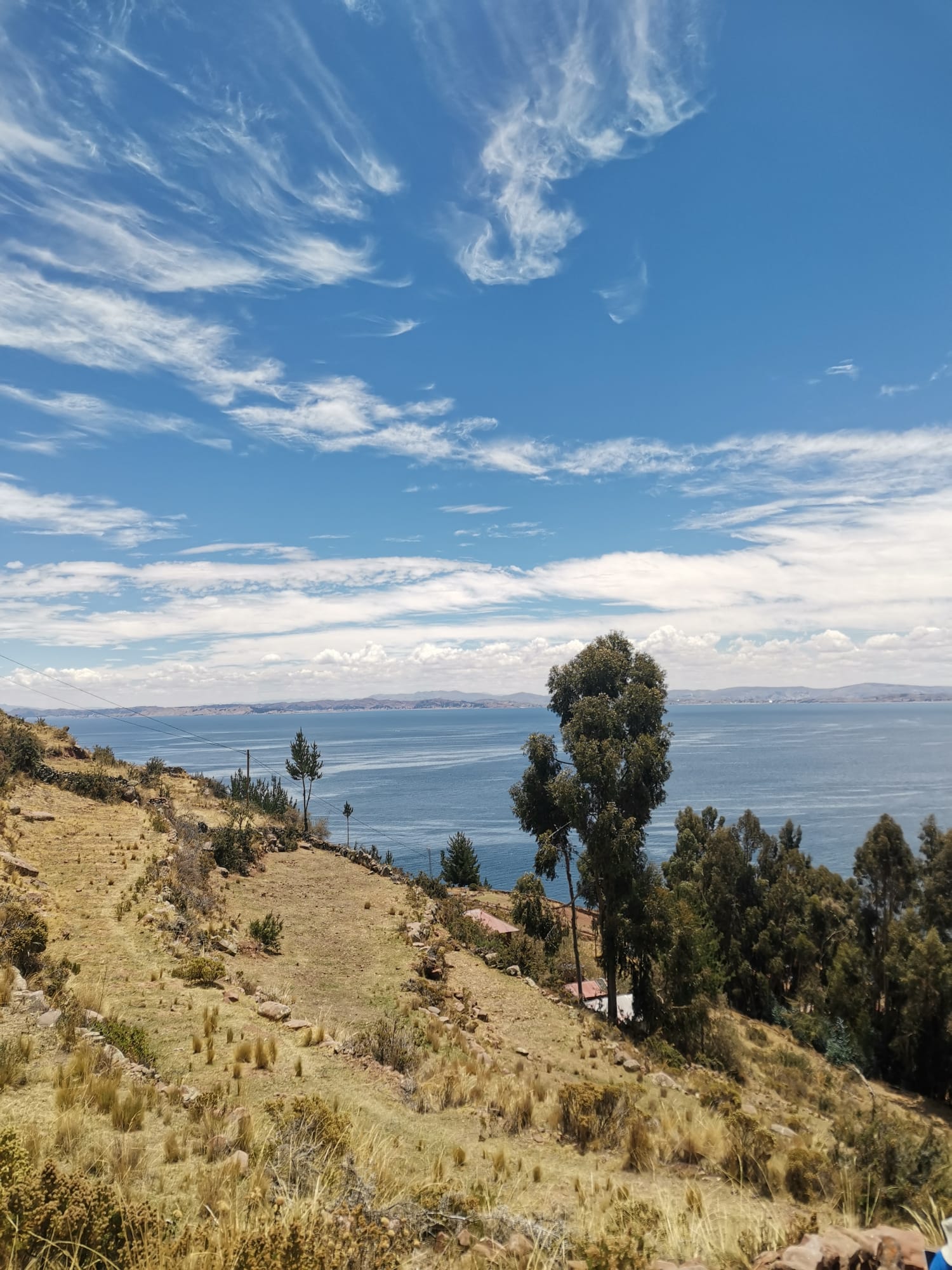
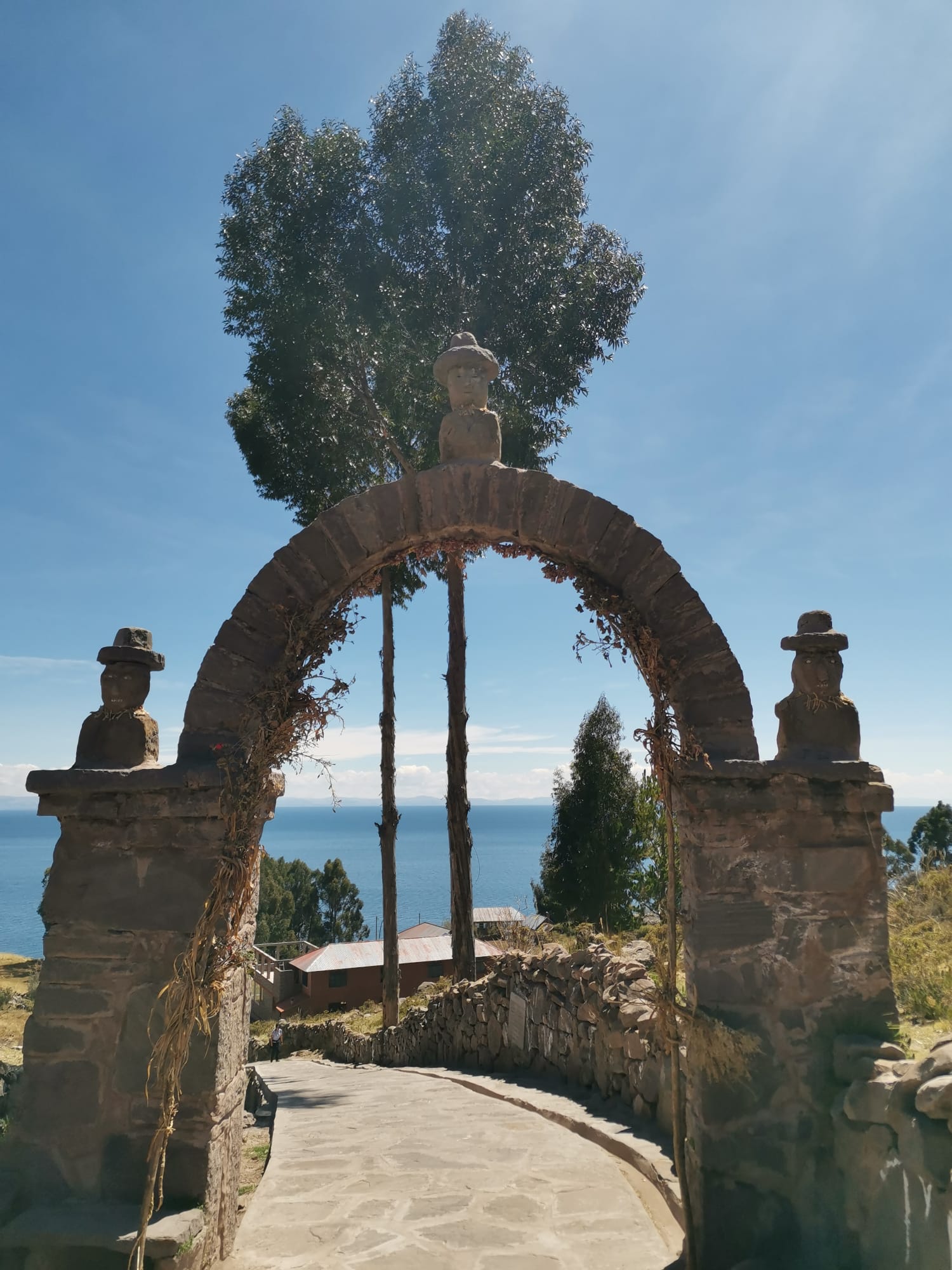
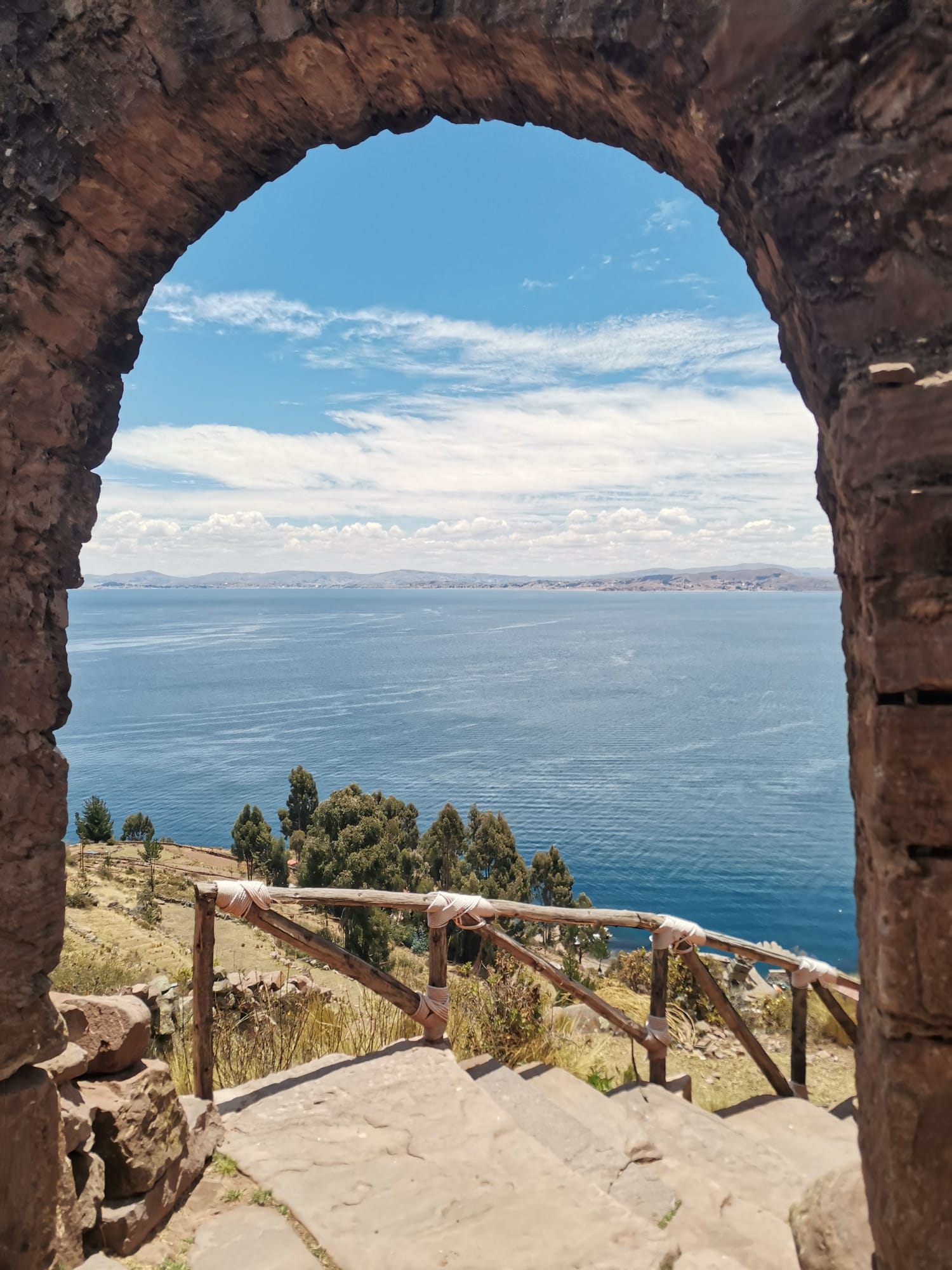
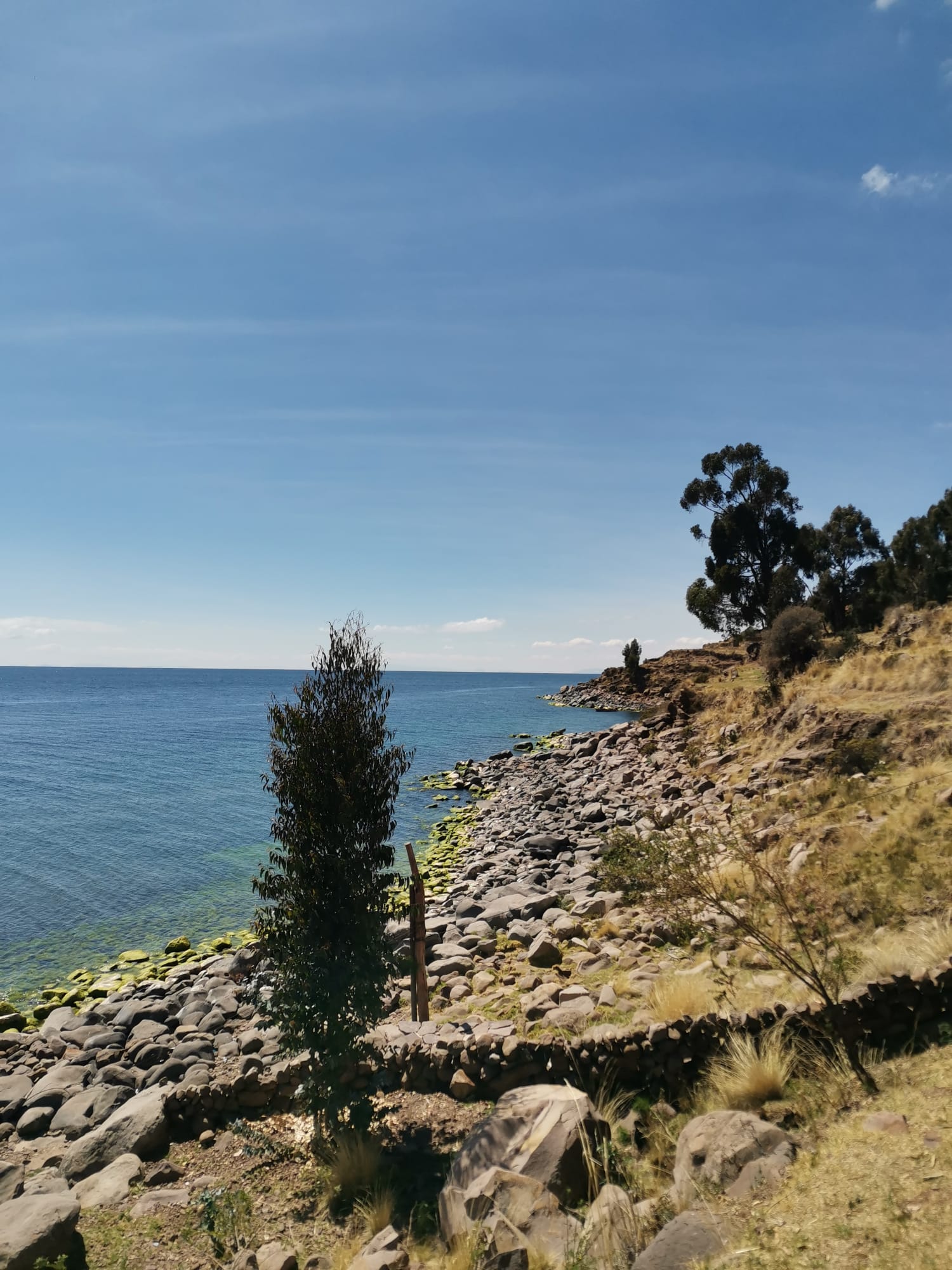
There is a long tradition of textiles on Taquile. We watched a mesmerising weaving demonstration from a young girl. As if this wasn't skillful enough, the patterns they weave are never written down, and have to be learned and memorised through practice, then passed on by word of mouthThese were not simple designs. Even while watching the weaving right before our eyes, we could not understand how the intricate patterns were created, so learning them without a visual guide must take an incredible amount of talent.. In order to marry, a woman has to weave a belt for her potential husband, which he then wears. Additionally, the men on the island all knit hats and the size, colour, and style of the hat denotes if a man is single, married, and also indicates his age and importance. Before a family can raise a child, the husband must also knit a mini hat for their baby to wear. After learning about some of the traditions, we watched a traditional dance before lunch on the island.
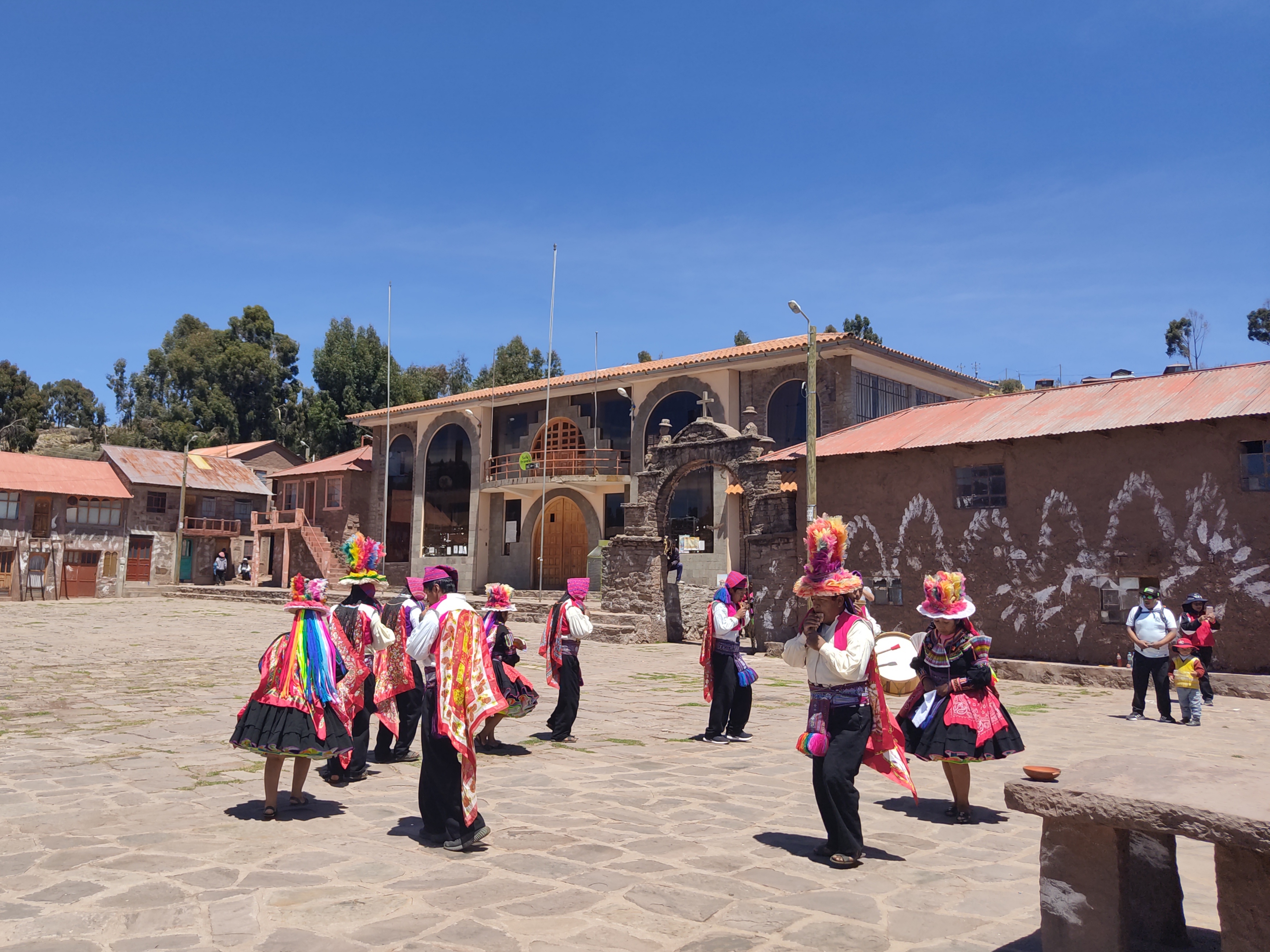
Although the locals participate more in fishing than on Amantani, the islanders still suffer the same problems with a lack of income from tourism as everywhere else on the lake. Before the pandemic, they received 2000 visitors a day, but now they only see 200. Having your income slashed by 90% is tough anywhere, but in such an isolated place with very little alternative opportunities, the younger generation are increasingly hoping to save up enough money to go to university on the mainland.
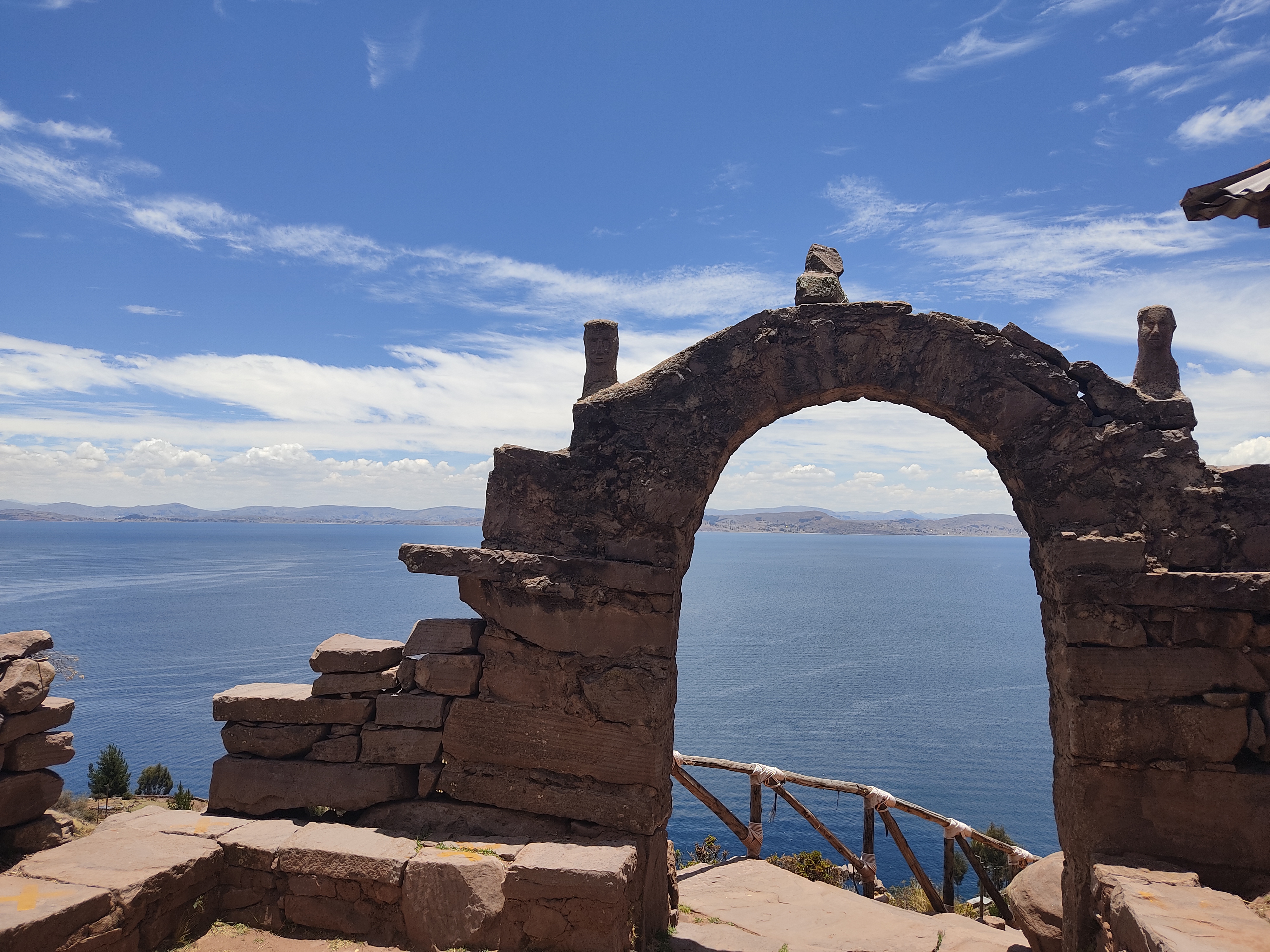
After learning a lot about the unique culture on these different islands, seeing the stunning views across the calm lake, and talking about the struggles of the tourism industry after the pandemic, we ended our time in Peru. Our first month in South America had been unforgetable (see everything we did in Peru here), and we could only hope that Bolivia would live up to the same standard.
Bolivian Lake Titicaca
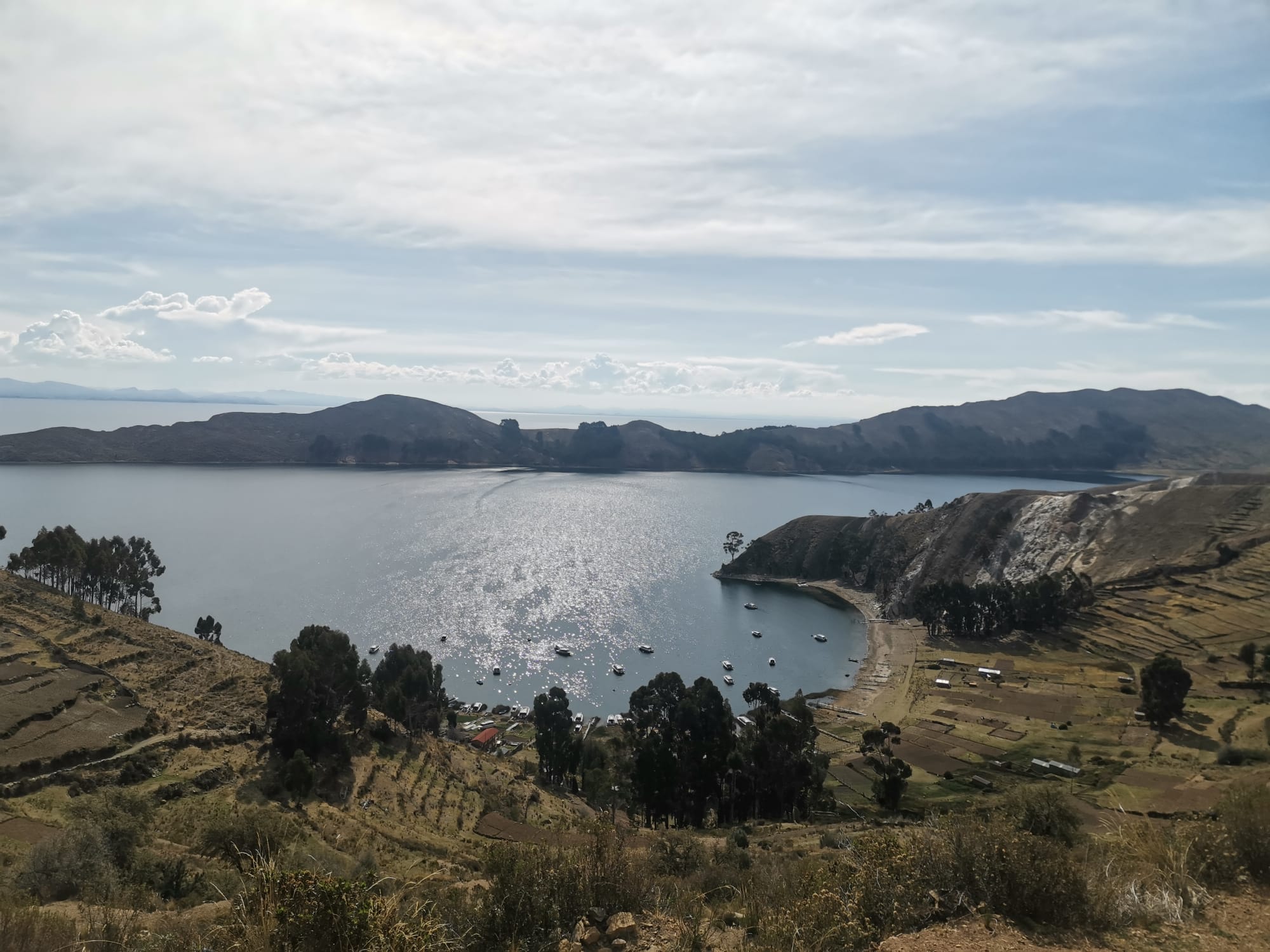
Crossing the border from Peru was easy, and we arrived at CopacabanaThis is only the second most famous Copacabana in South America. Supposedly, this Bolivian town inspired the naming of the lively beach in Rio de Janero., Bolivia, in no time. Although Puno is a sprawling metropolis that most people only briefly pass through, Copacabana is significantly smaller than its Peruvian counterpart. Its quiet, laid-back feel and cheaper prices make Copacabana the ideal place to actually spend time on the shores of lake Titicaca.
Copacabana
Copacabana has numerous quiet spots which are perfect to sit by the lake and relax, watching the boats come and go. Furthermore it has some good hiking opportunities, the best of which is cerro calvario. Although it is not the highest viewpoint, reaching the top of this hill is a short and manageable hike, and gave us one of the best urban panoramas of our entire South America trip. Because the hill is relatively small, it provides an incredibly close and detailed birds-eye-view of the town and the bay. Although we had read that the area can be dangerous Our biggest worry was the stray dogs on the hill, but we ended up befriending one of the friendly puppies up there. There were lots of tourists, all enjoying the sunset, and it felt very safe while we were there., we found it perfectly safe to walk back from the hill after sunset.
Our biggest worry was the stray dogs on the hill, but we ended up befriending one of the friendly puppies up there. There were lots of tourists, all enjoying the sunset, and it felt very safe while we were there., we found it perfectly safe to walk back from the hill after sunset.
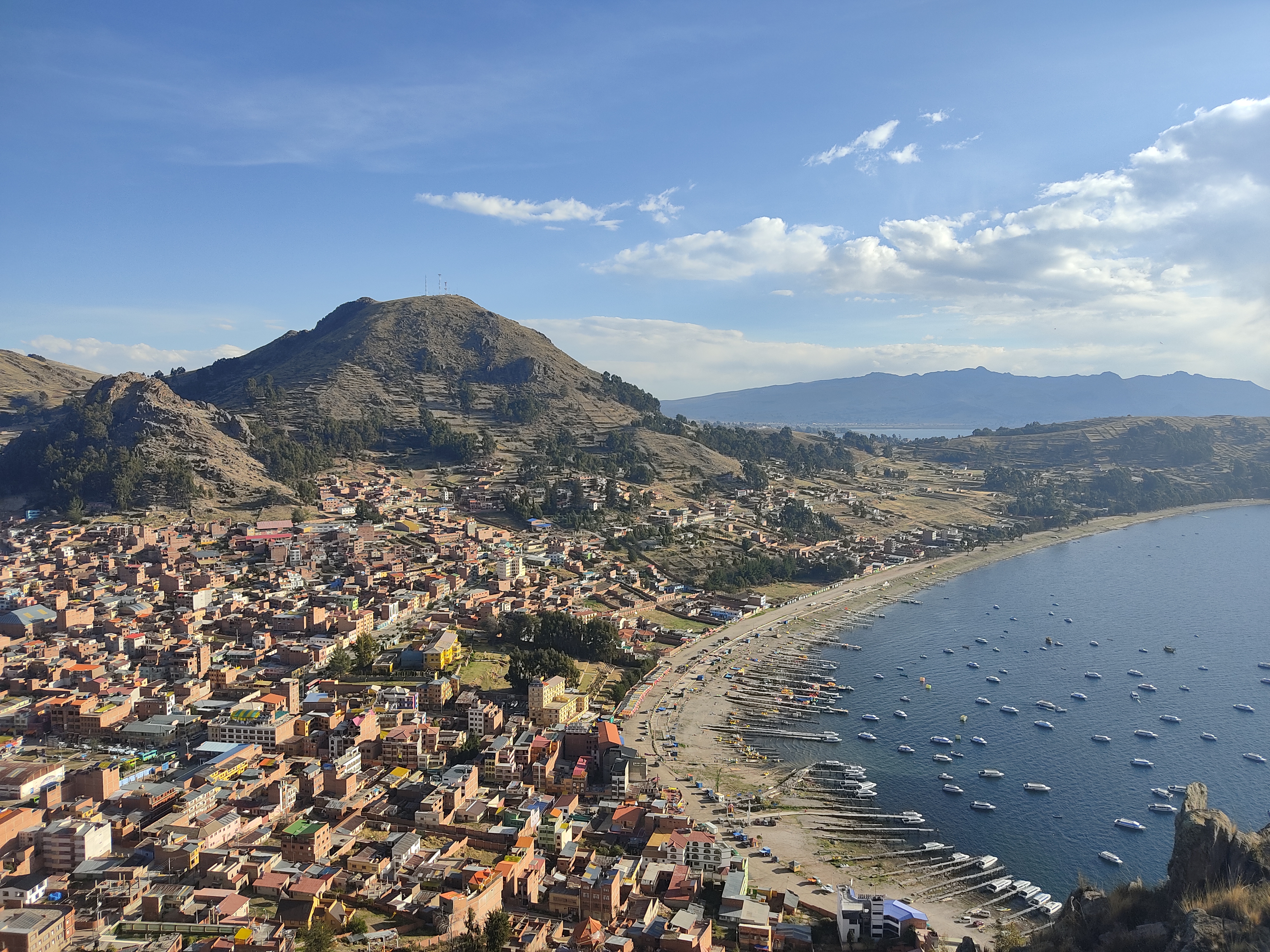
Bolivians from all over the country drive their newly-purchased cars to this sleepy town every dayInformation online suggets the ceremonies are huge on Sundays, with loud music and dancing as the queues of cars fill the streets. However, while we were there, the ceremonies seemed to be the same every day, with a handful of cars participating at any given time., to participate in the Bolivian car blessing ceremoniesThe Bolivian car blessing ceremonies take place in Copacabana. The idea is that a blessed car will avoid having an unfortunate collision on the roads (as if they needed another excuse to drive recklessly in Bolivia - the standards of road safety are already low all over South America).. Possibly one of the most bizarre traditions in South America, the church in Copacabana is the site where vehicles, decorated with garlands, pom-poms and flowers, are blessed by the priest as he flicks holy water over it and the owners. Then, various ‘confettis’ of rice, coca leaves, or other items are thrown over the car, before Coca-Cola, beer, or maybe even champagne (depending on the budget) is sprayed over it.
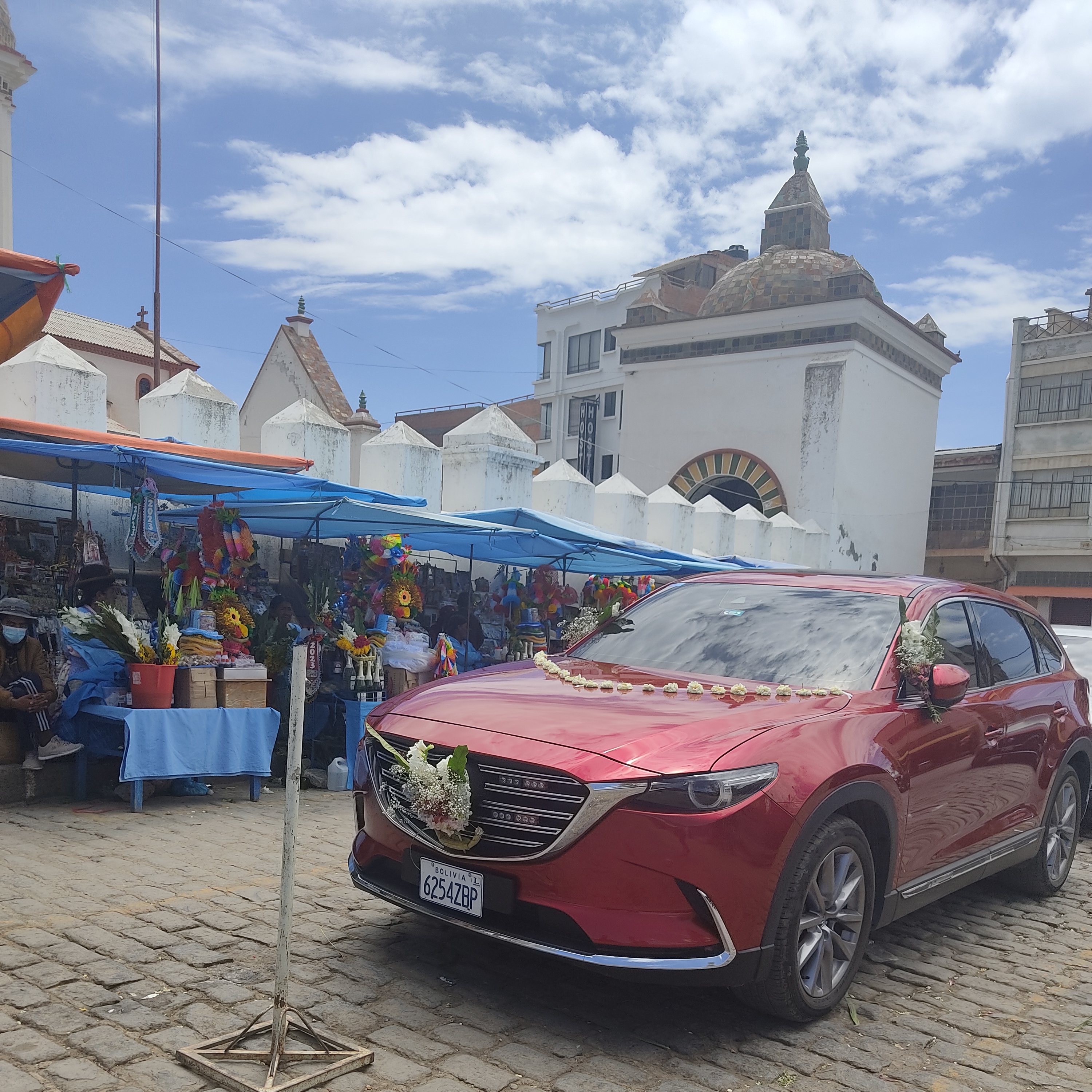
Being a slightly touristy town, Copacabana had some incredibly good cafés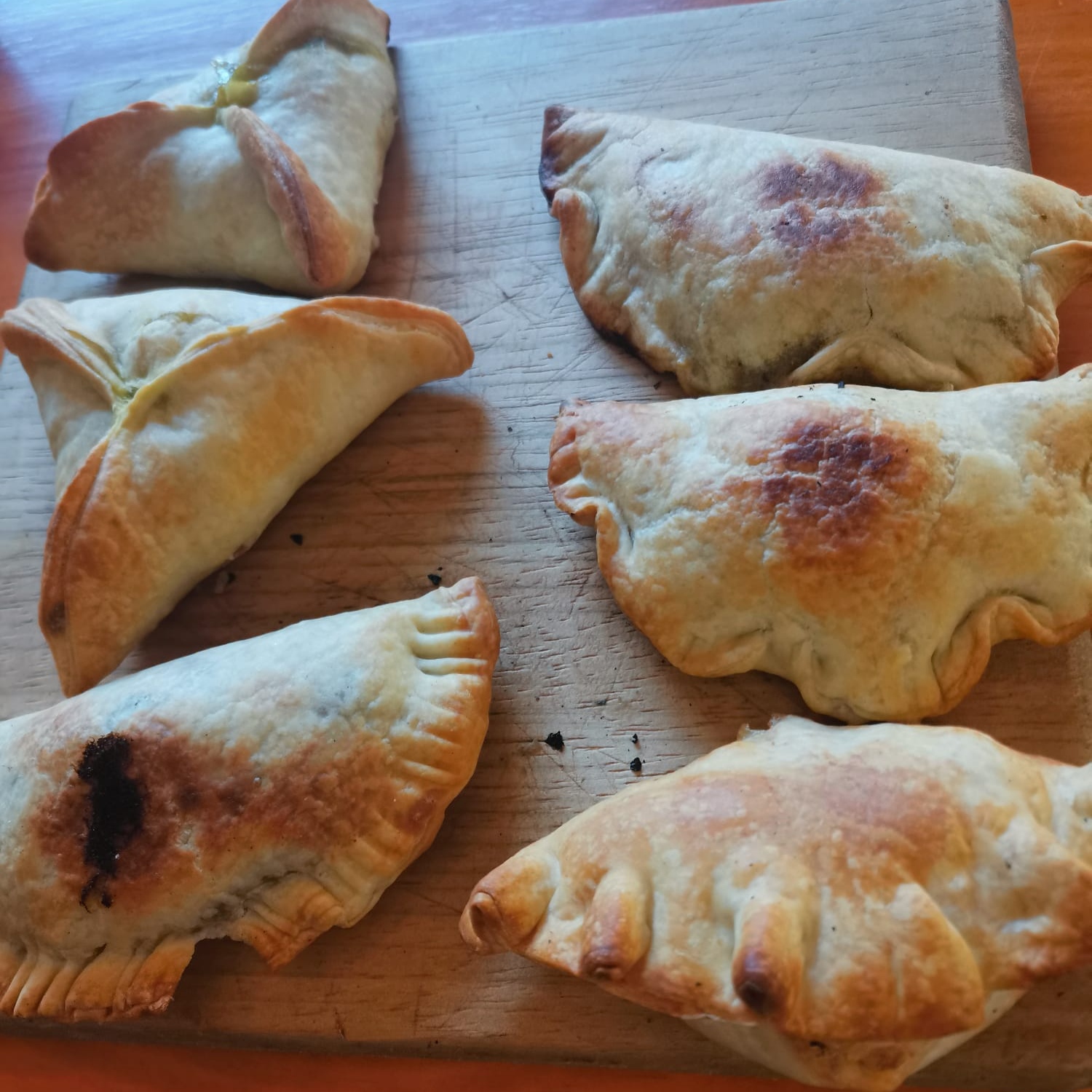 These amazing empanadas from Copacabana were potentially the best ones we found in South America, and most of the fillings are vegan, such as the mushrooms, curry, and spicy vegetables. We also loved the tomato, cheese, and basil ones as a vegetarian alternative. and restaurants, which, although they are aimed at tourists, are still very good value for money. Besides the cheap restaurants and small marketThere is no supermarket in Copacabana (and most of Bolivia!), but the market has the essentials. Fresh bread, cooked meals, and cosmetics can be found in the streets, but make sure you go inside the building to find the fruit and vegetable sellers., there's not an awful lot going on in the town itself, but Copacabana does have plenty of ATMs and a Entel shop selling SIM cards, so is a great place to get settled for a trip in Bolivia.
These amazing empanadas from Copacabana were potentially the best ones we found in South America, and most of the fillings are vegan, such as the mushrooms, curry, and spicy vegetables. We also loved the tomato, cheese, and basil ones as a vegetarian alternative. and restaurants, which, although they are aimed at tourists, are still very good value for money. Besides the cheap restaurants and small marketThere is no supermarket in Copacabana (and most of Bolivia!), but the market has the essentials. Fresh bread, cooked meals, and cosmetics can be found in the streets, but make sure you go inside the building to find the fruit and vegetable sellers., there's not an awful lot going on in the town itself, but Copacabana does have plenty of ATMs and a Entel shop selling SIM cards, so is a great place to get settled for a trip in Bolivia.
Isla Del Sol
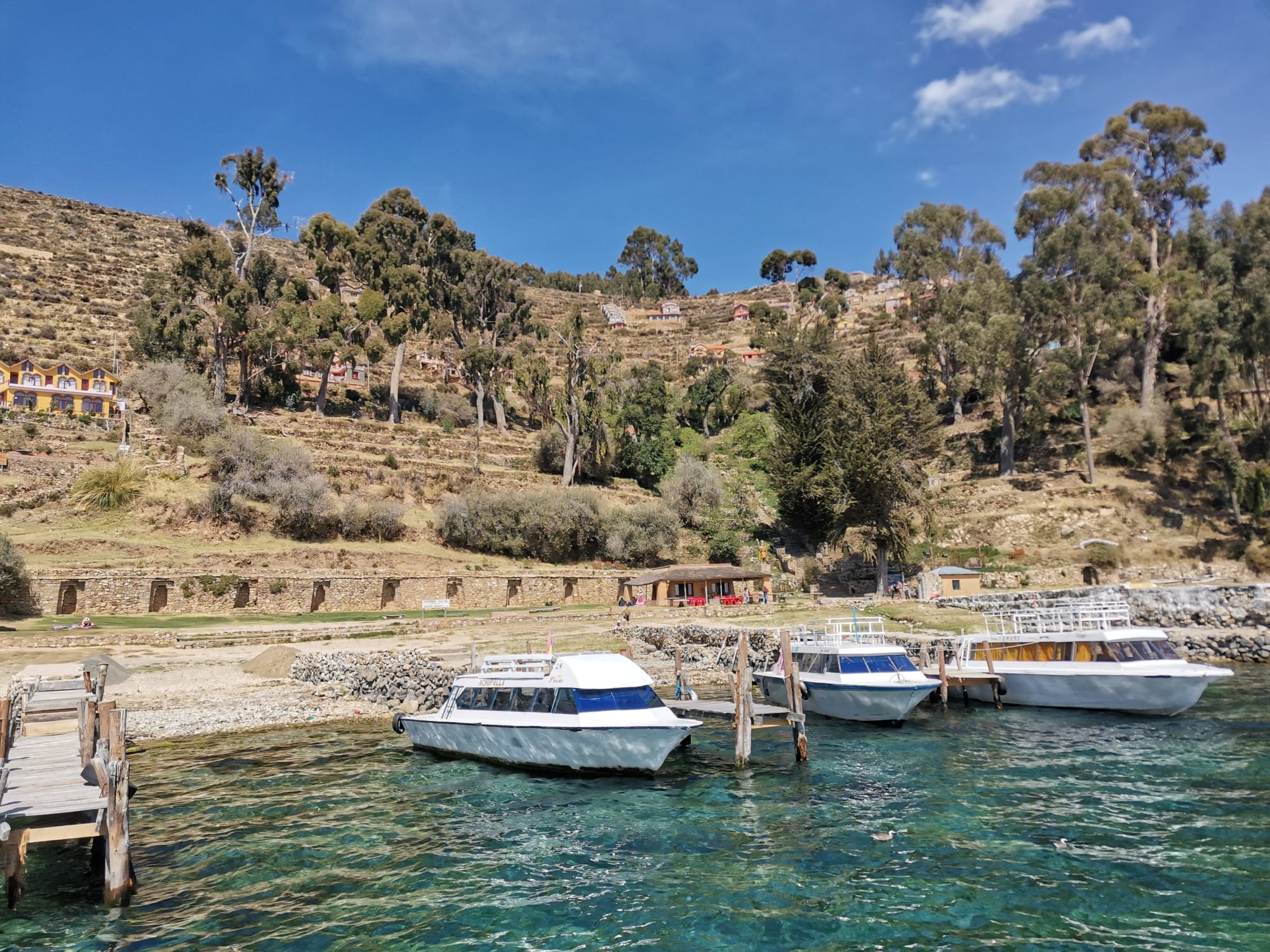
Like the Peruvian side of the lake, there are several islands that tourists can visit from the Bolivian shores of Titicaca. The most popular of these is Isla del Sol, named after the temple of the sunThe sun was the most sacred diety for the Incas, so Isla del sol is thought to be of great importance. It is supposedly the birthplace of the first Inca, Manco Kapac, who was 'born from the sun' and then sent on a quest to found one of the largest empires in the world. found on its shores. The mysterious island can be visited by boat from Copacabana as a day trip, or you can spend the night in one of the hostels on the island.
Isla del sol is even less inhabited than the islands on the Peruvian side of the lake, with no motorised traffic whatsoever, and only a few small villages on the 14km2 Island. The island has two ports - one in the north and one in the south. Most people explore the entire island by taking a boat to one of the ports and walking the 8km Inca trail that runs along the length of the island, passing incredible scenery and incan ruins before taking a return boat from the other port. Unfortunately, contrary to what we read onlineNever trust anything you read online! In Bolivia, and most of South America in general, the information you find online is out of date and not accurate. The advice online was to buy tickets from the official stall by the dock the day before departure, but when we got there we were told it is only permitted to by tickets on the day. Additionally, most articles said the entire island was still closed to tourists due to a dispute 8 years ago... With no up-to-date information, it is hard to know what to beleive. Asking the locals is really the only way to get reliable information. Unfortunately, we had already booked our accommodation on the island before we encountered these issues., the boat tickets we got were only valid for the southern port so we couldn't visit the north.
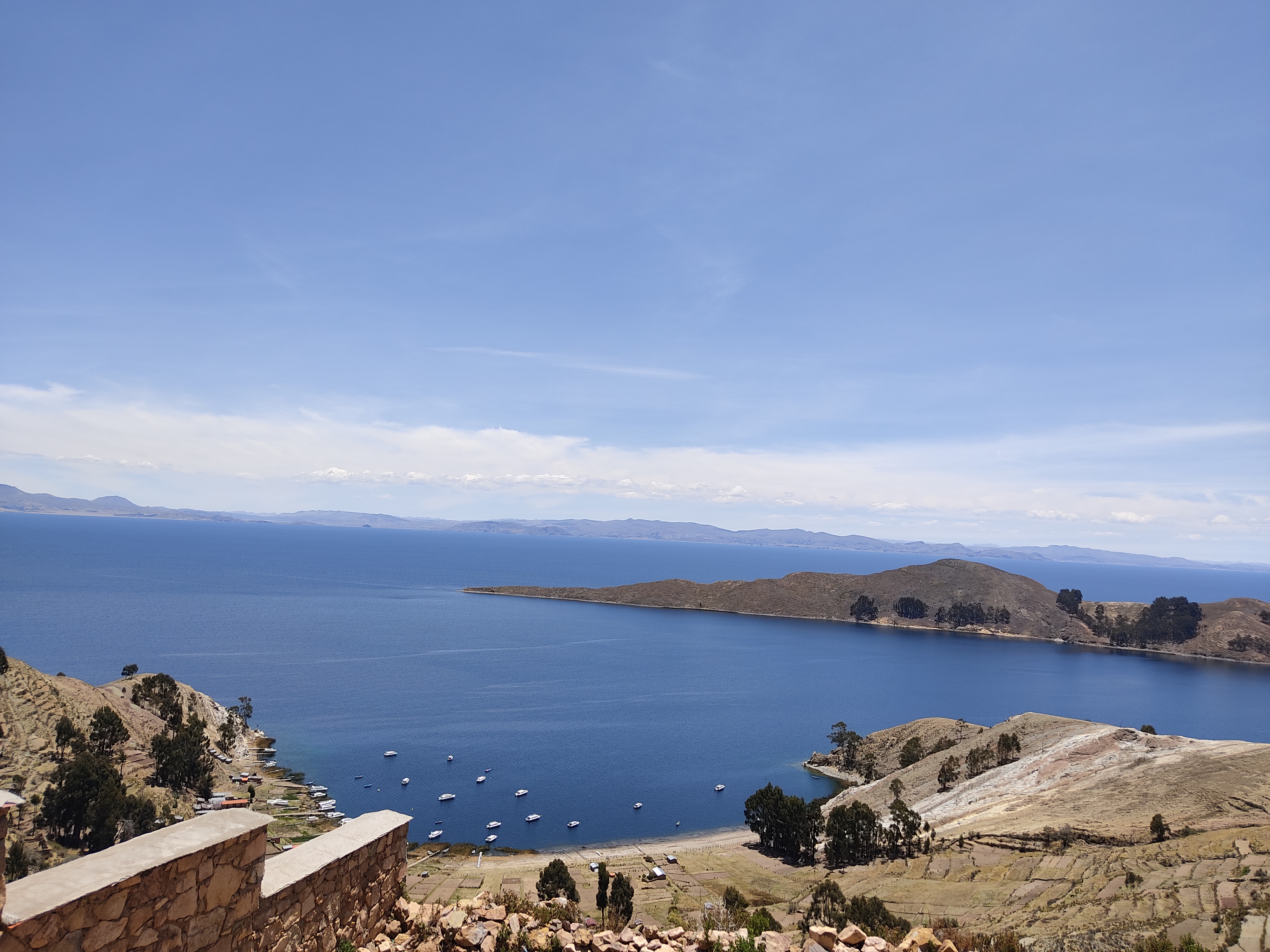
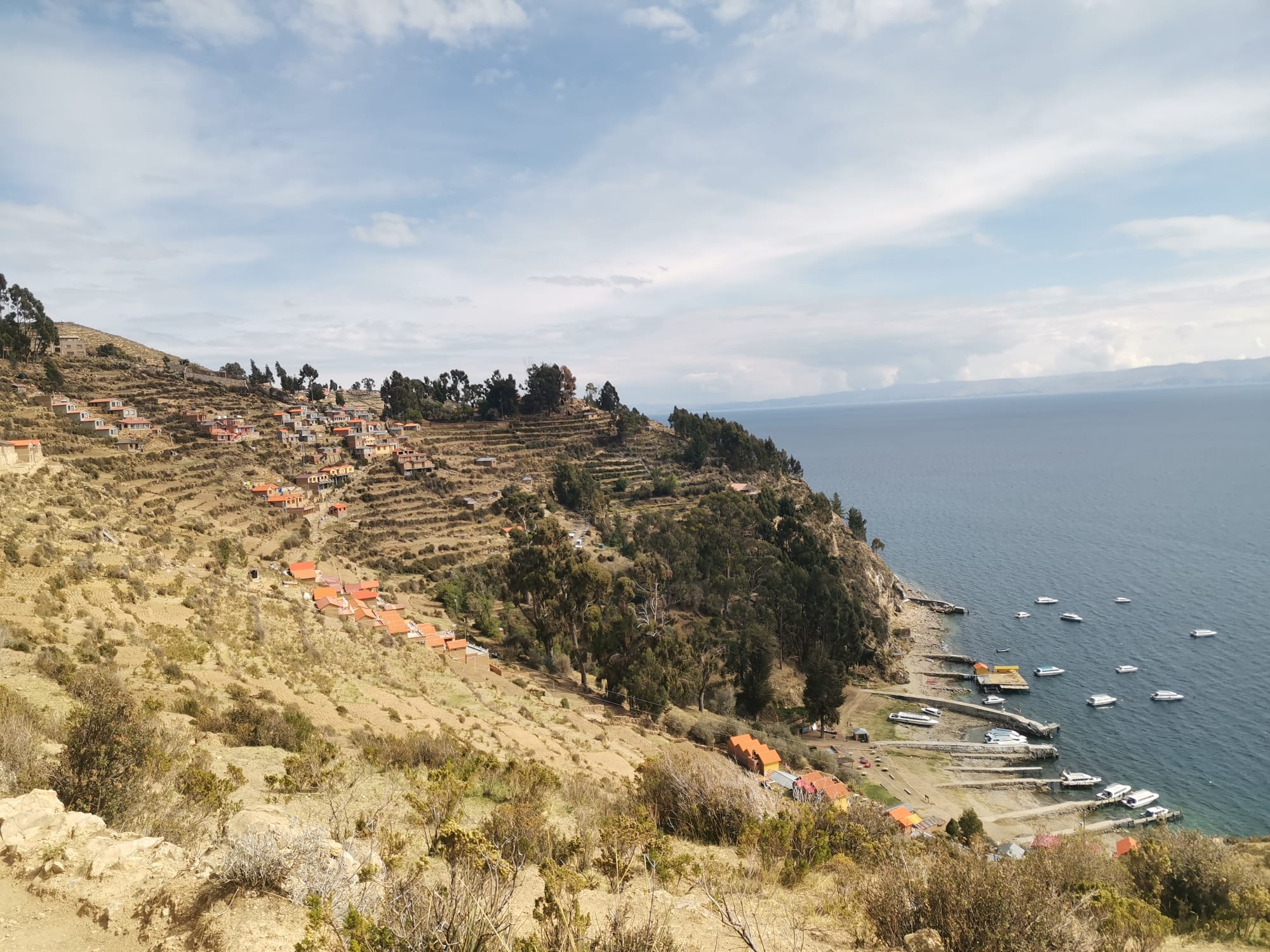
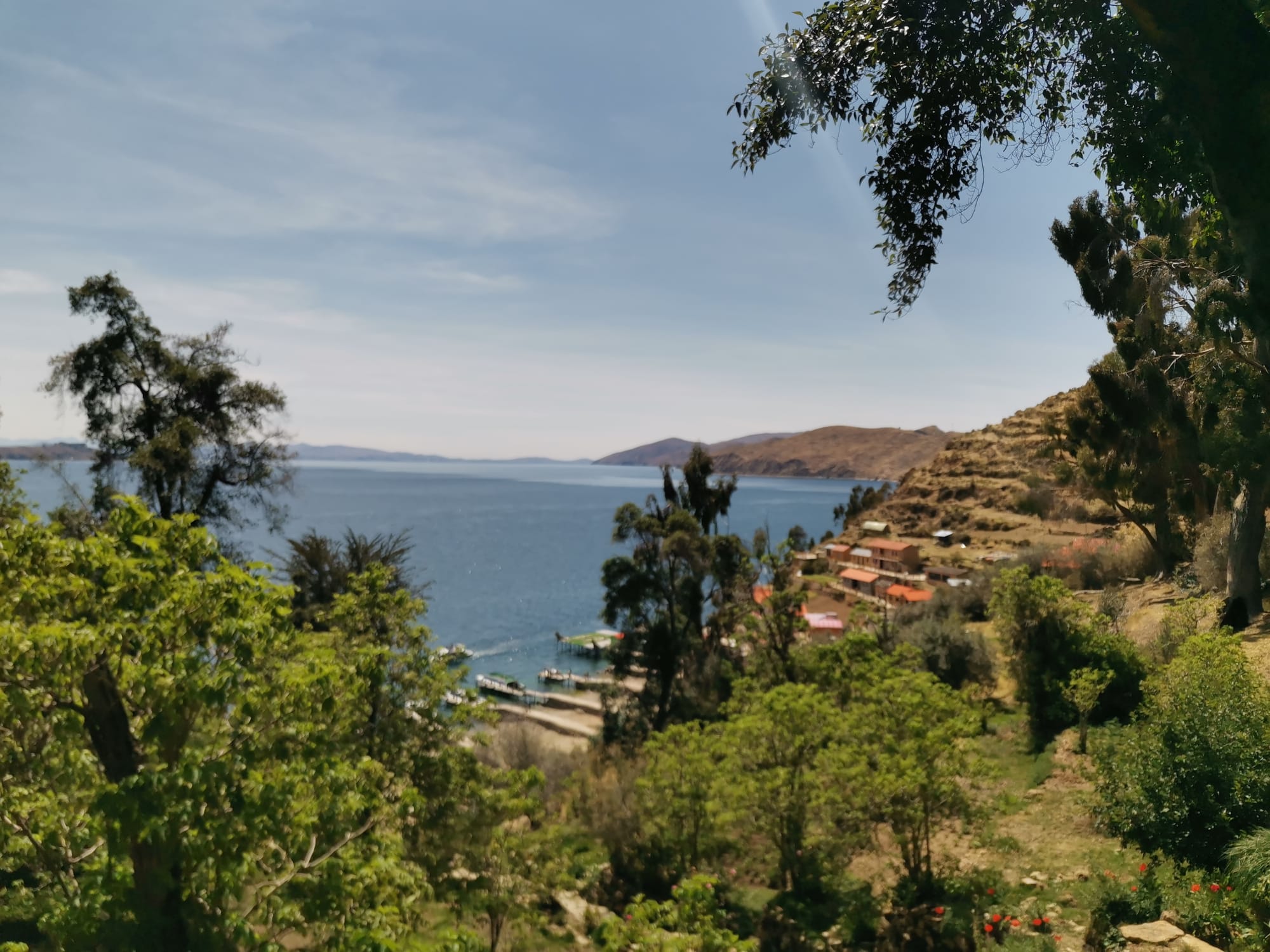
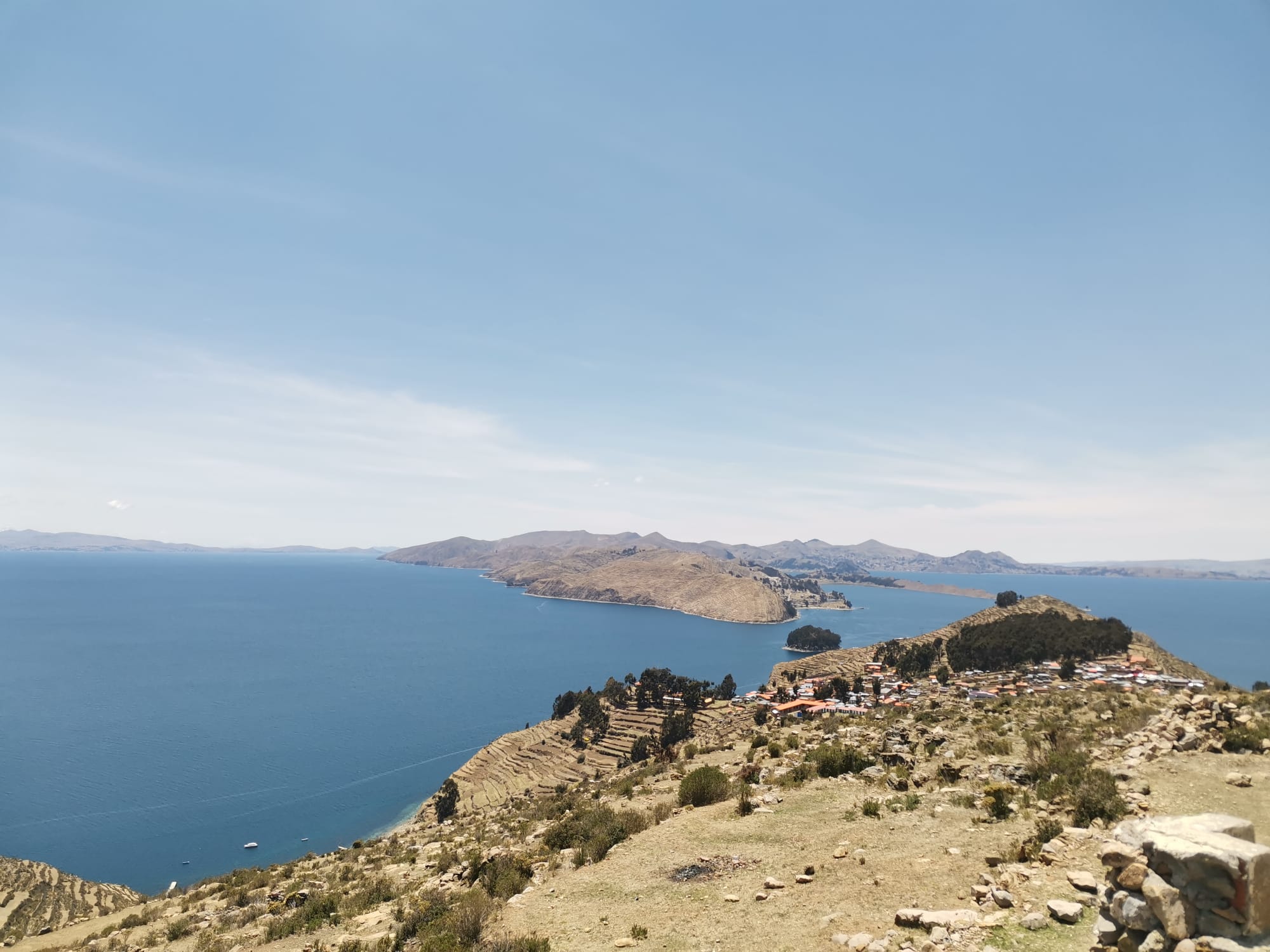
Luckily, the southern part of the island was beautiful enough. Although trudging up the 200+ Inca steps up from the port was tough given the altitude, the many rogue donkeysSince there are no vehicles on the Isla del Sol, the locals all use donkeys to carry goods from the port up to the town. The donkeys are well behaved, and know the routes they have to walk, so are often allowed to roam freely. wandering around seemingly without an owner made for good distractions. Although we technically took the wrong pathWe were hoping to walk some of the Inca trail that runs to the north, but we ended up hitting a dead-end. Later, we found the point at which we went wrong. The path to the north turns left behind a house and is not signposted, whereas the mirador path continues straight up and is signposted. from the town, the views from the island's hills were amazing. The island is incredibly peaceful and isolated, with nothing but green hills and the calm water of the lake for as far as the eye could see.
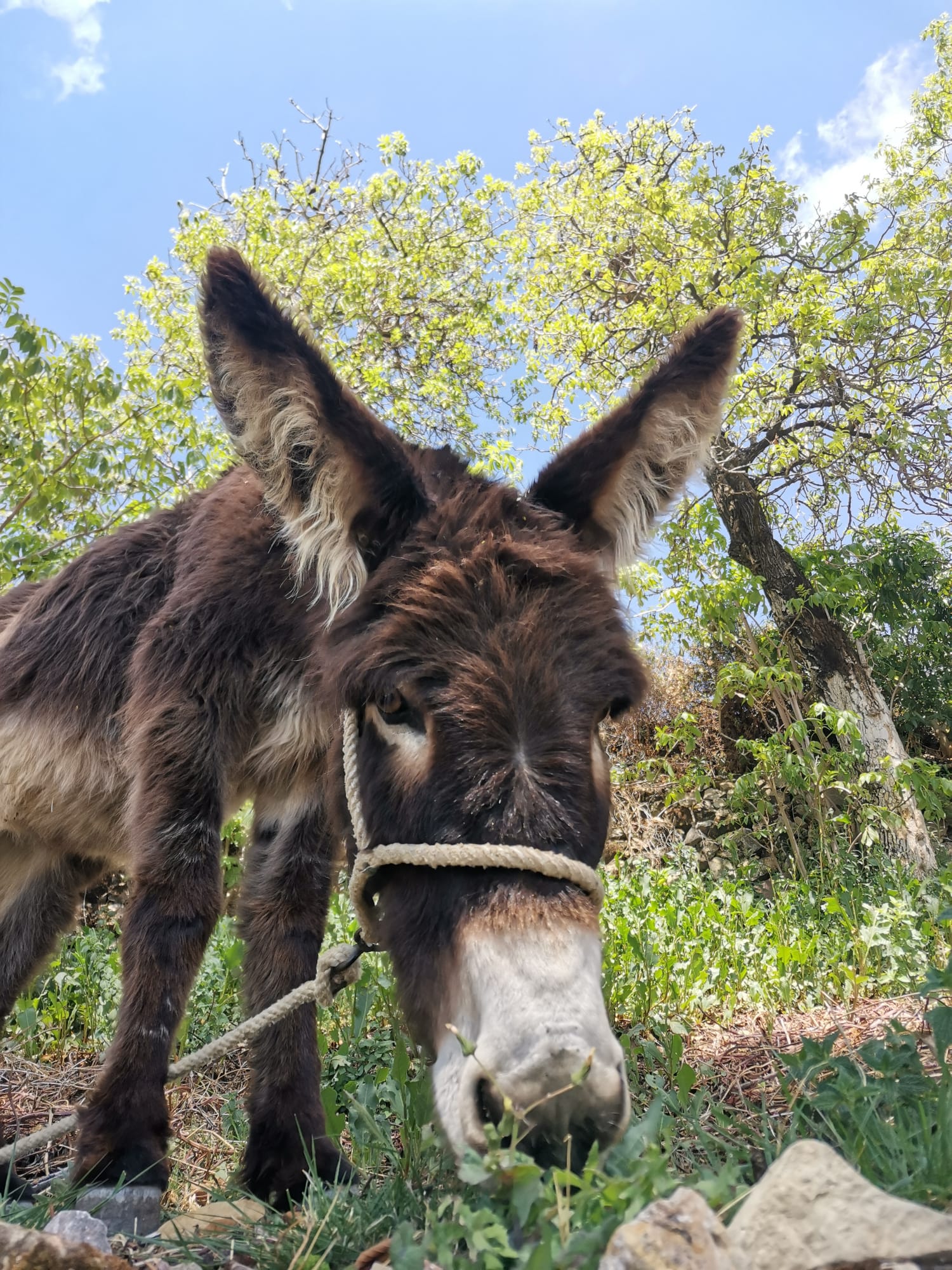
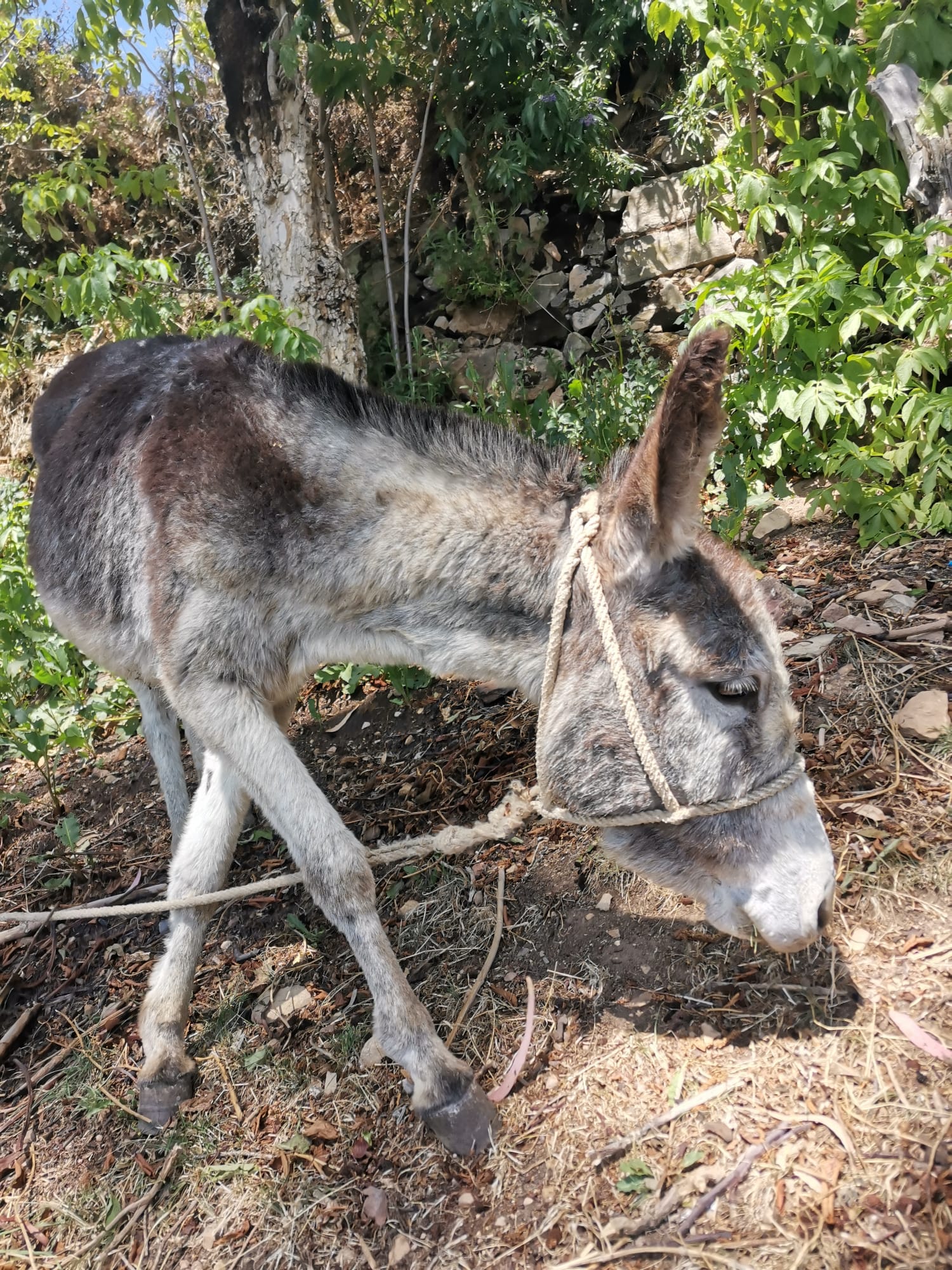
Despite its remoteness, the island has several cafes and restaurants, providing unbelievable views over the bay of the south of the island. After walking in the hot sun all morning, there is no better way to relax than to enjoy a cold drink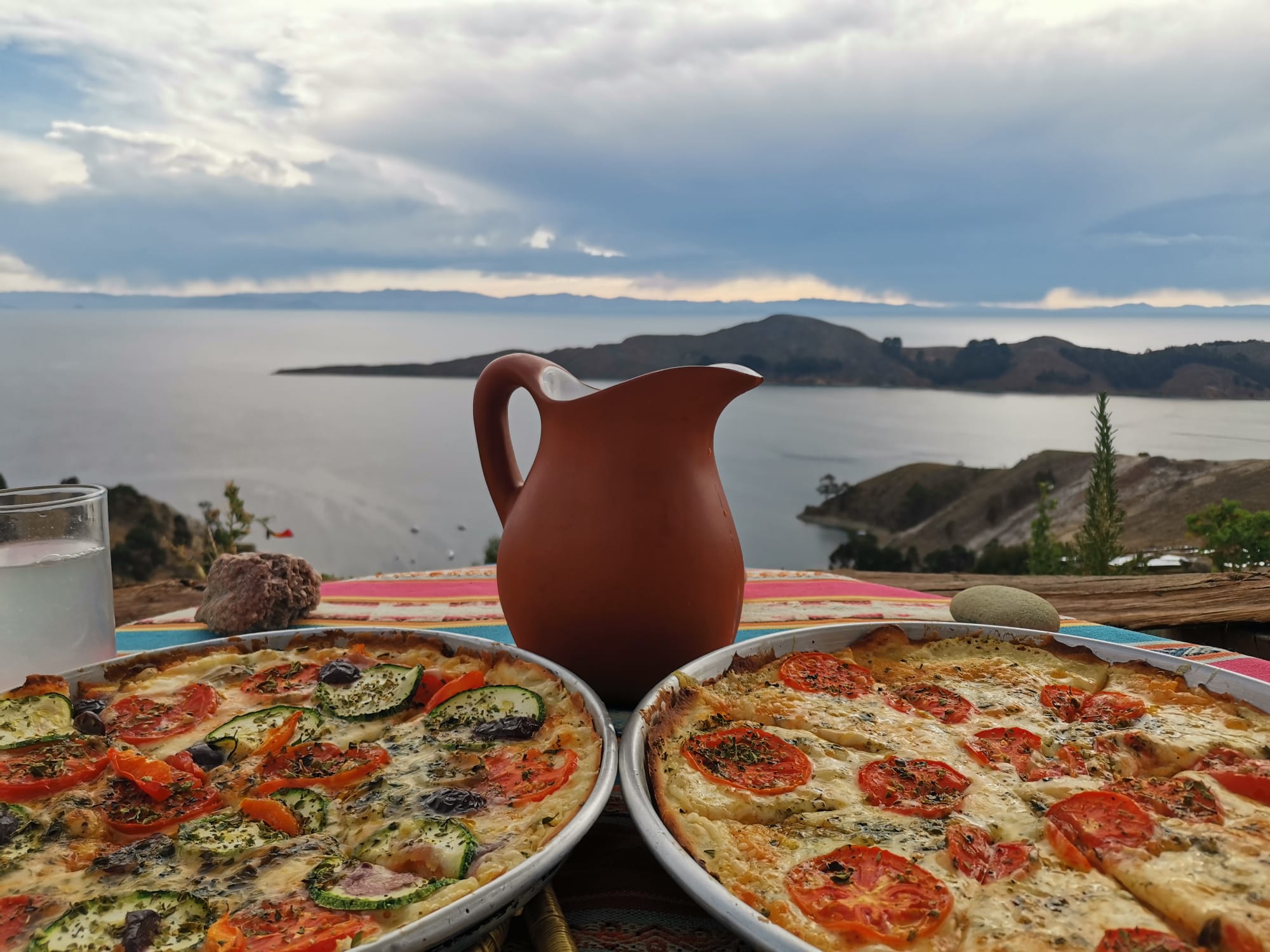 at one of these cosy spots.
at one of these cosy spots.

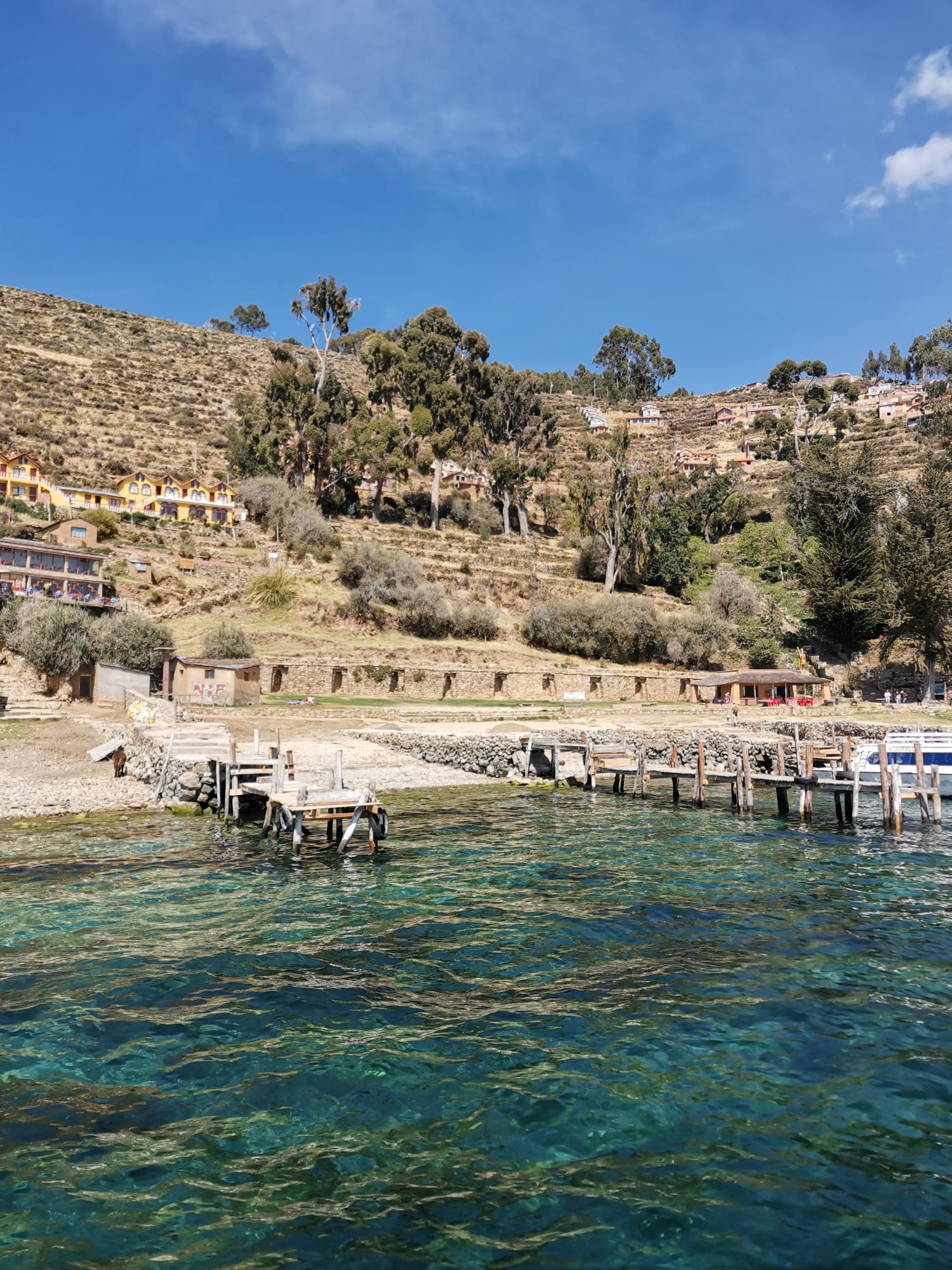
Of course, there is an even better way to cool off from the hot Peruvian sun. Despite the altitudeWe were warned on Amantani island that, although it was sunny and the water was crystal clear, the extreme altitude meant that the lake was far too cold to swim in. Our guide even said it can be dangerously cold. We couldn't quite believe this, but we hadn't seen anyone swimming in the lake since we arrived, so cautiously ventured to the waters edge., looking down from the cliffs to the blue waters below was too tempting. As we headed down to the bay, the locals we passed reassured us that it was a very warm and nice spot to swim. Still not entirely believing them, we cautiously waded into the lake. The water was perfectly refreshing, and probably one of the warmestComing from the UK, we are used to cool oceans. The water at lake Titicaca was the warmest we would expeirence for 4 months, until we were in Uruguay towards the end of our trip. waters we have swam in.
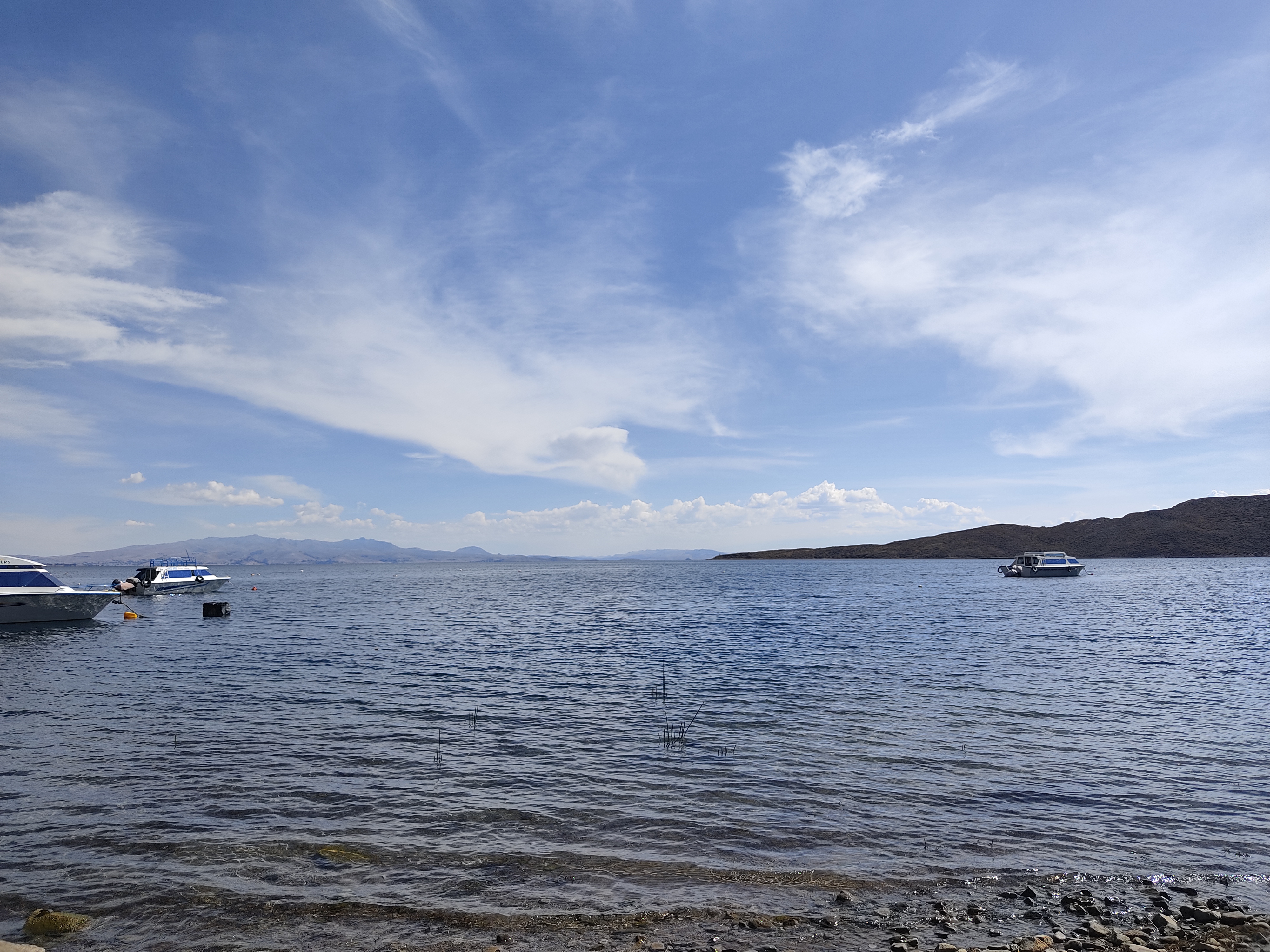
Although most Incan ruins are found in the north of the island, the most important one, the temple of the sun, is located on the southern tip. We went there early, when no-one else was around, and got to explore the eerie and abandoned temple alone. As we meandered through the old doorways and empty chambers, it was easy to imagine the Incas doing the same as they made offerings to their gods many years ago. The fact that this temple was so important to the Incas seemed odd, considering how deserted it was now.
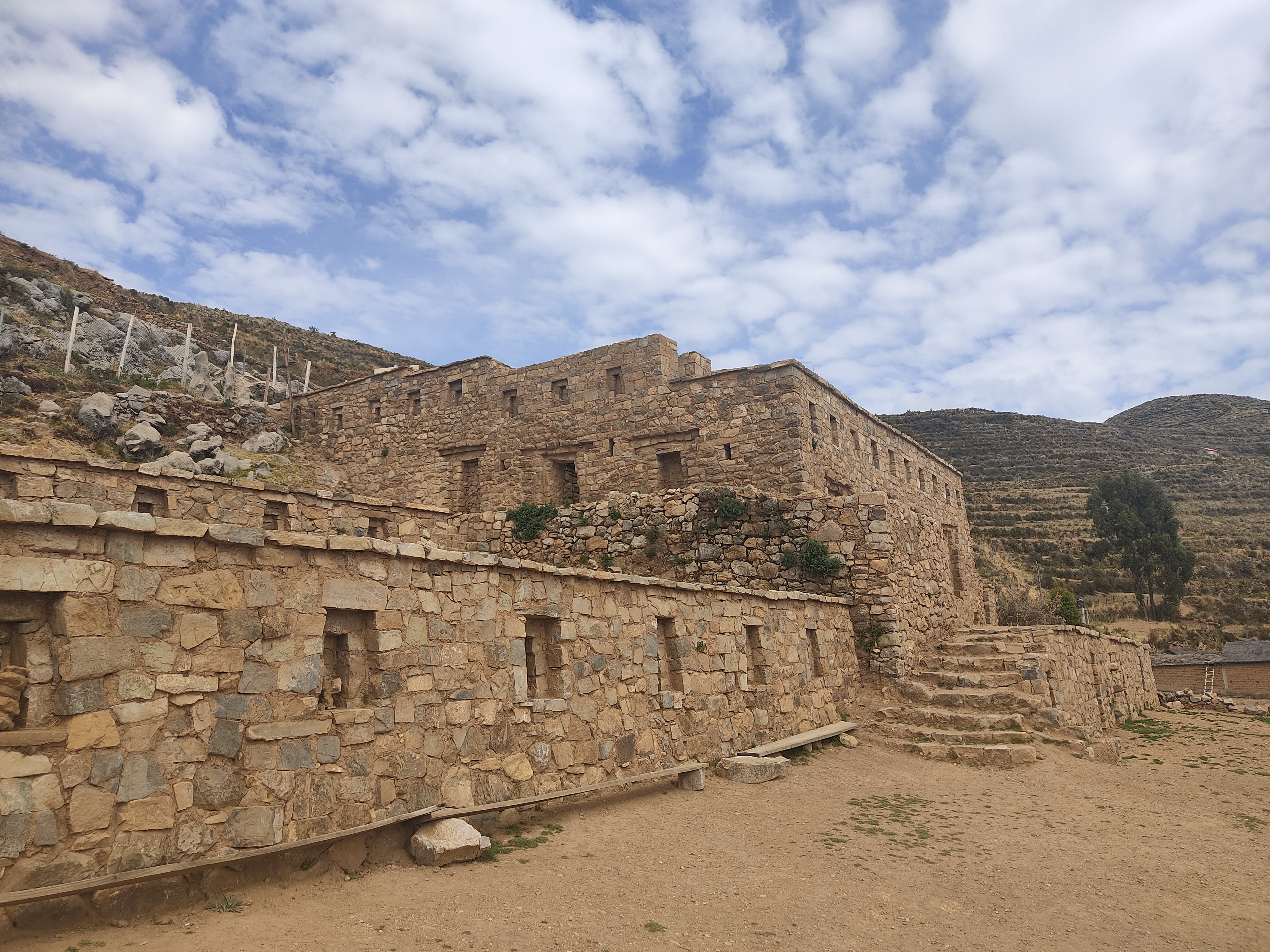
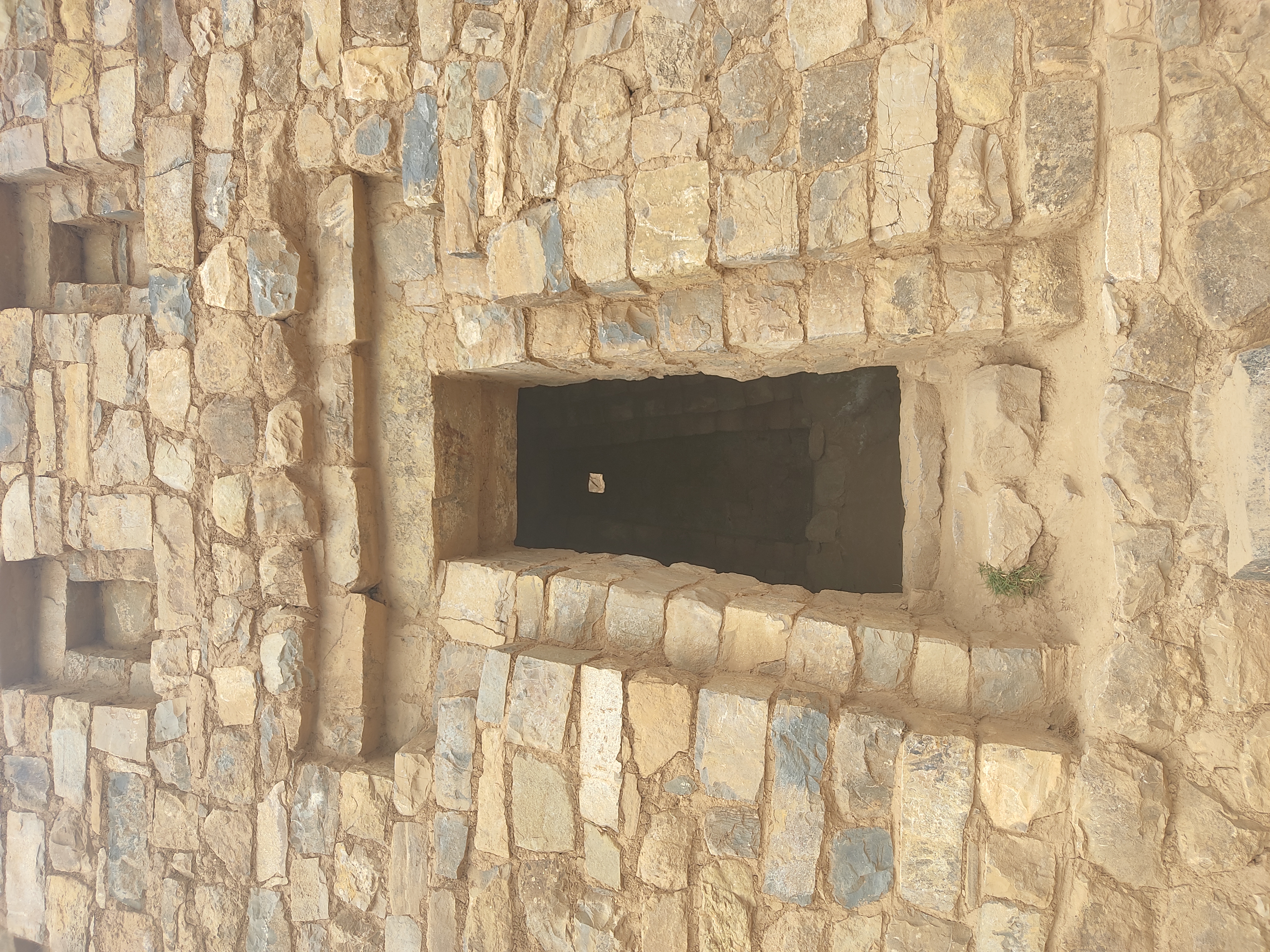
Overview
While the islands on the Peruvian side (Uros, Amantani, and Taquile) are quite similar to the Bolivian side (Isla del Sol), providing incredibly tranquil and peaceful places to relax, the towns themselves couldn't be more different. Apart from the overnight island stay, Puno doesn't really have anything to offer most tourists. Copacabana, on the other hand, offers the chance to watch one of the most bizarre traditions, an incredible viewpoint to watch the sunset, and a nice atmosphere to relax in. Although the Peruvian side has more diverse islands, we loved Isla del Sol, so overall we can only recommend visiting both sides of the lake.
